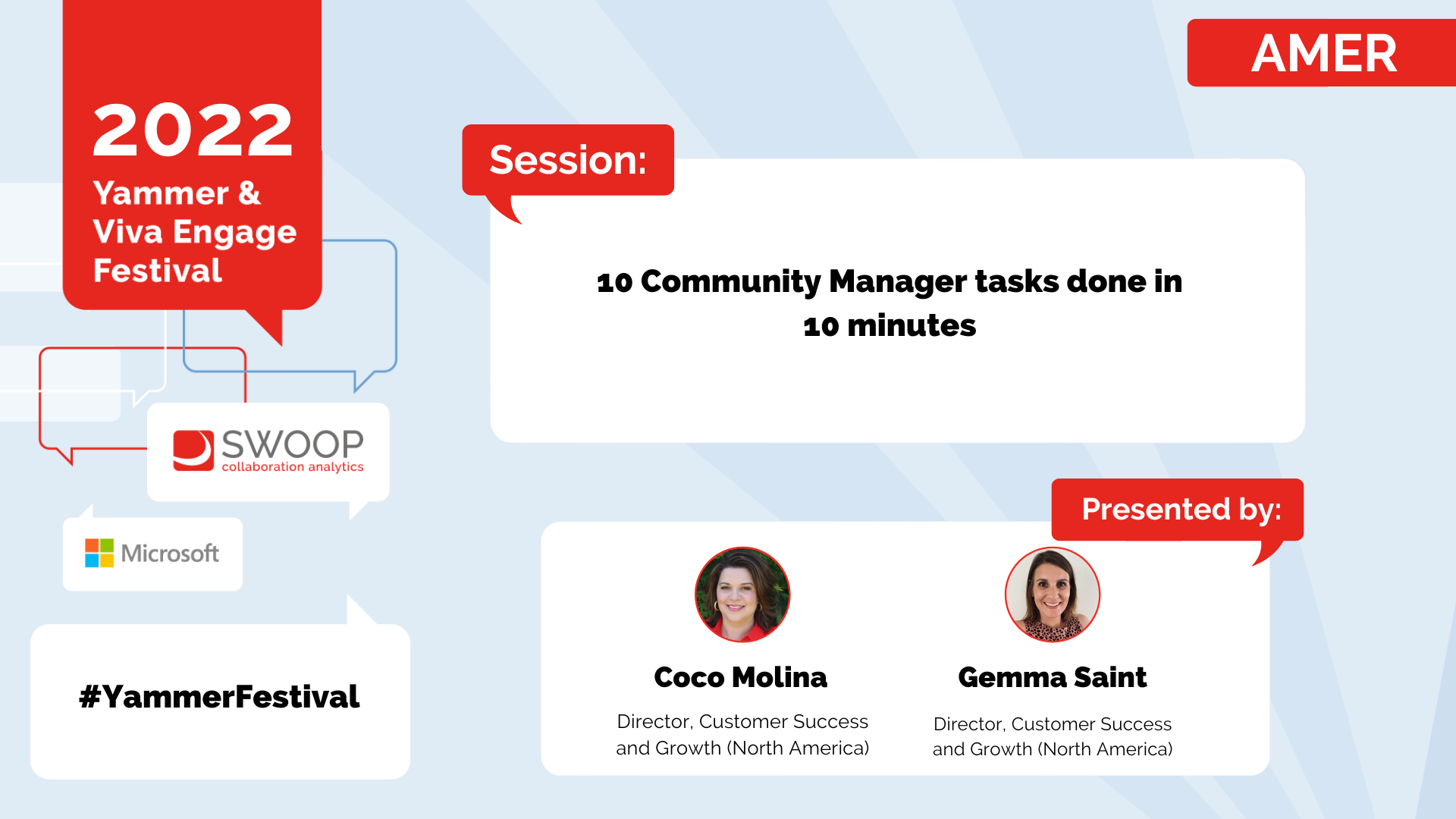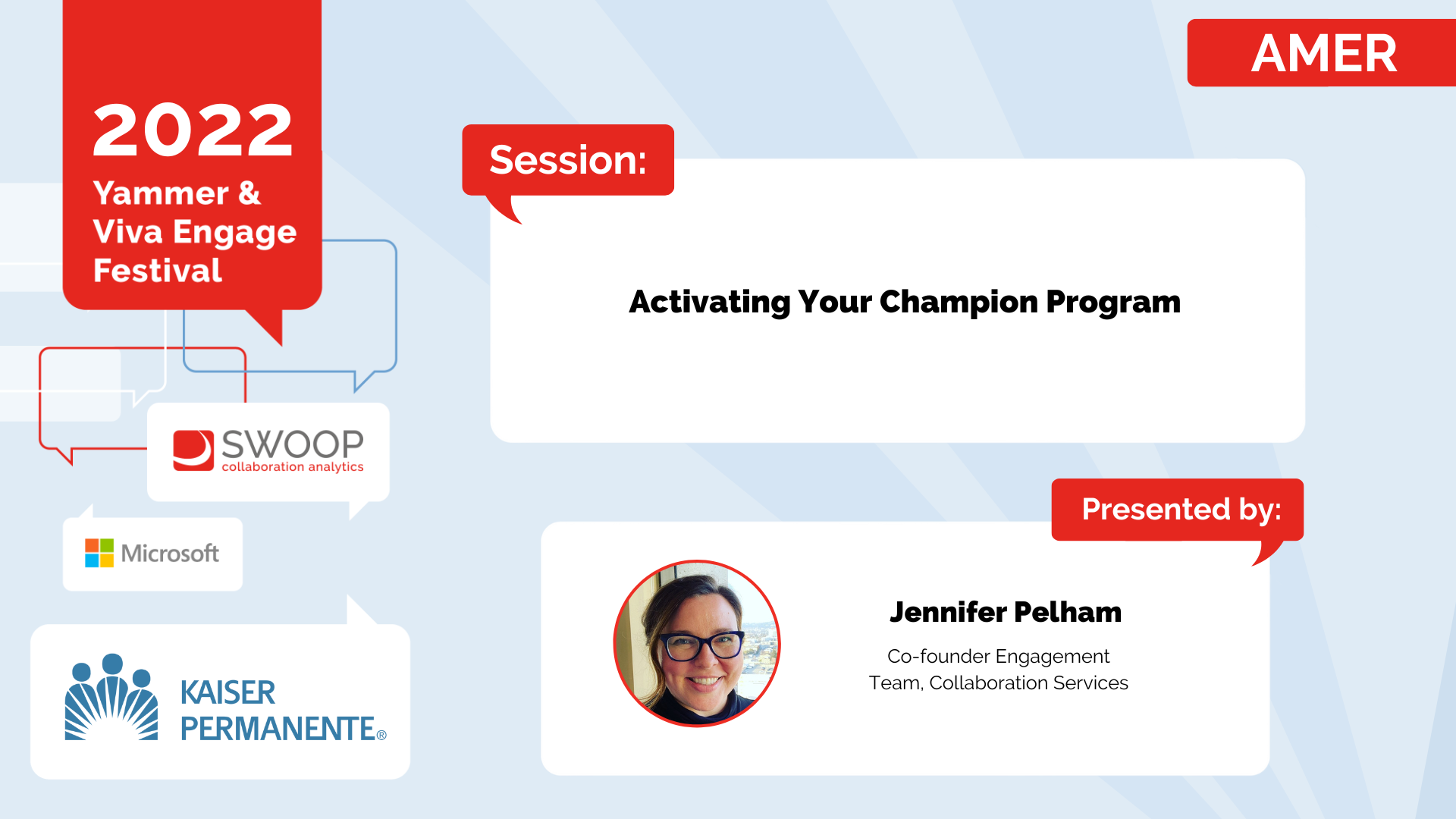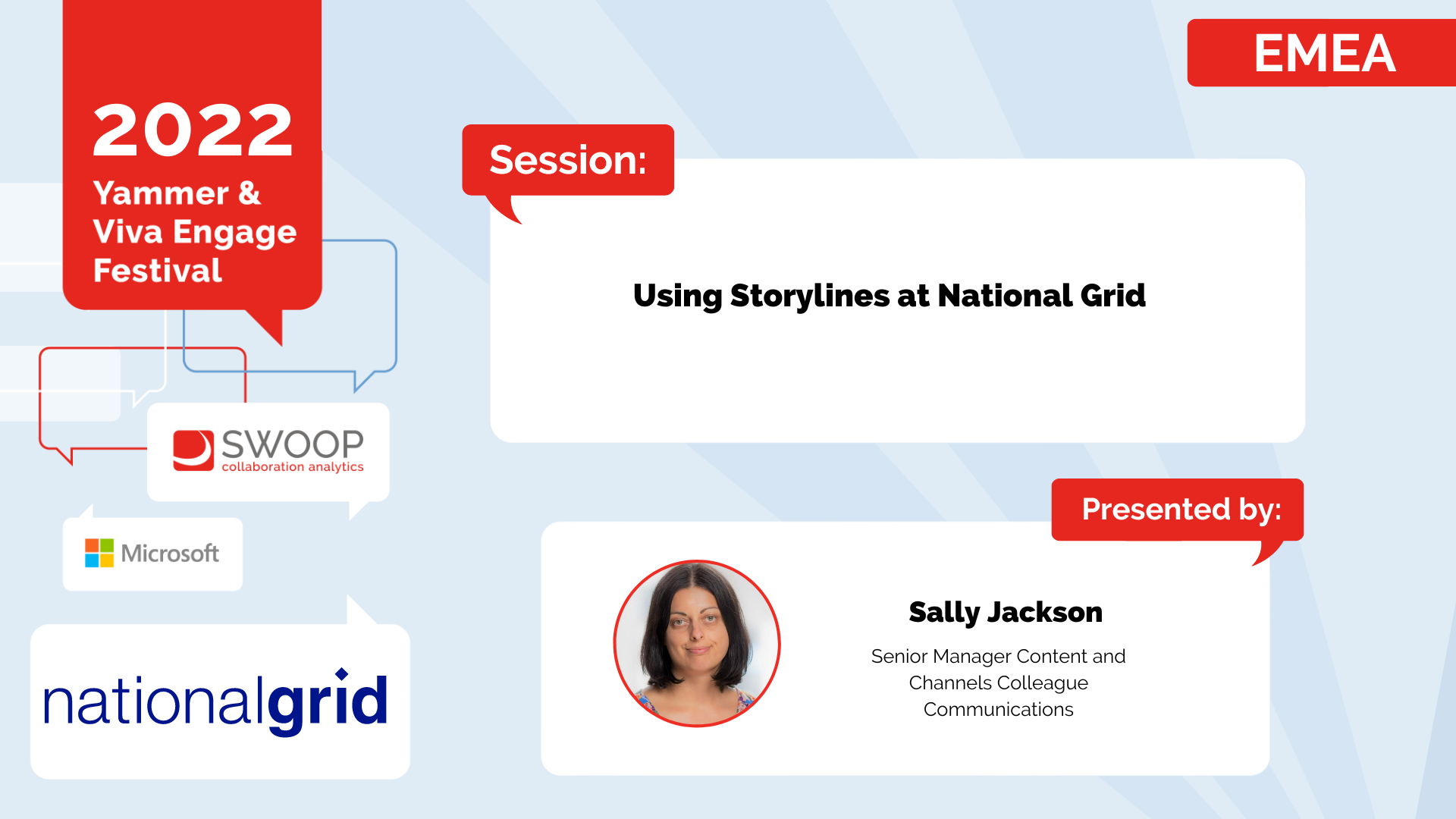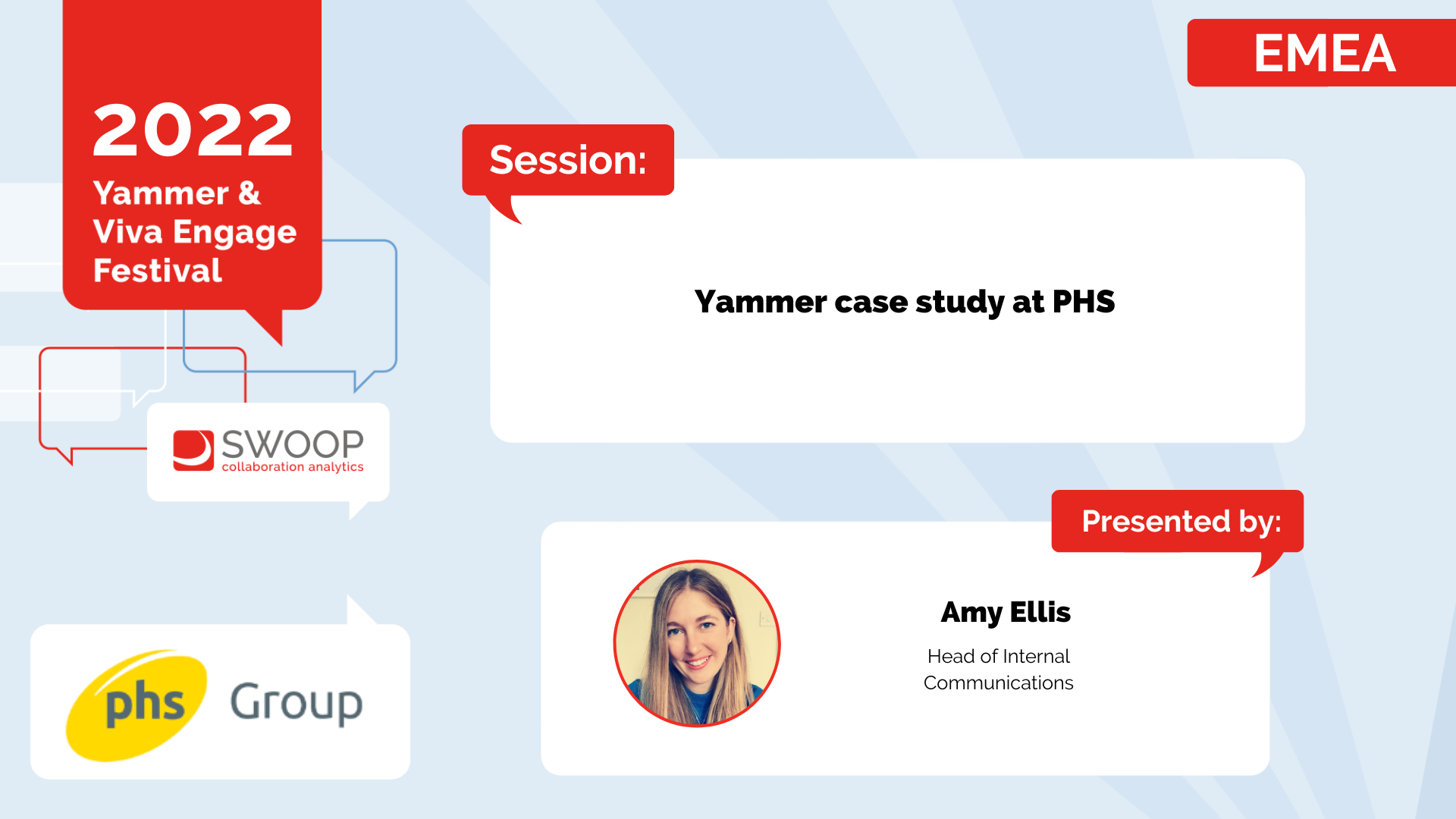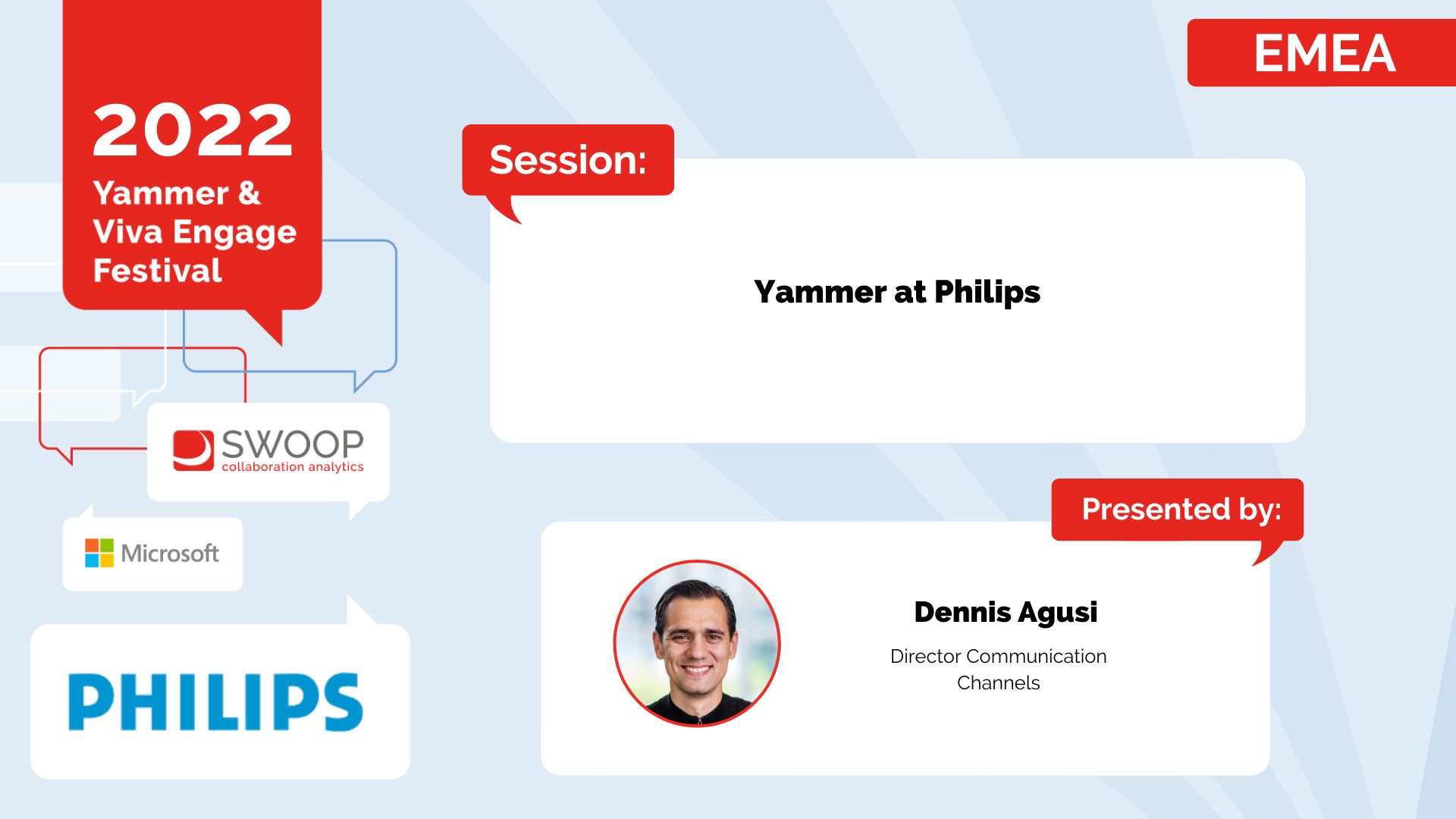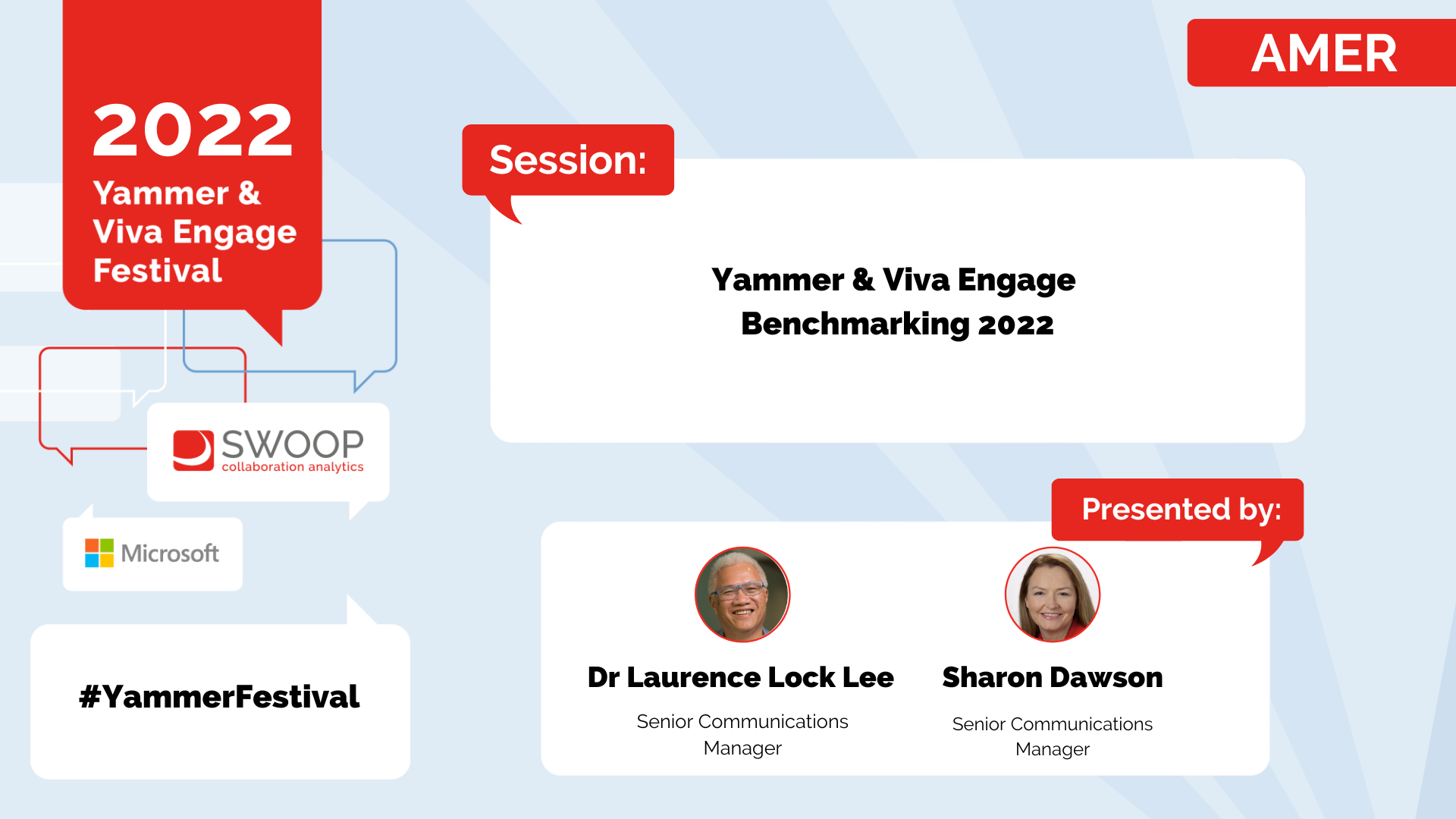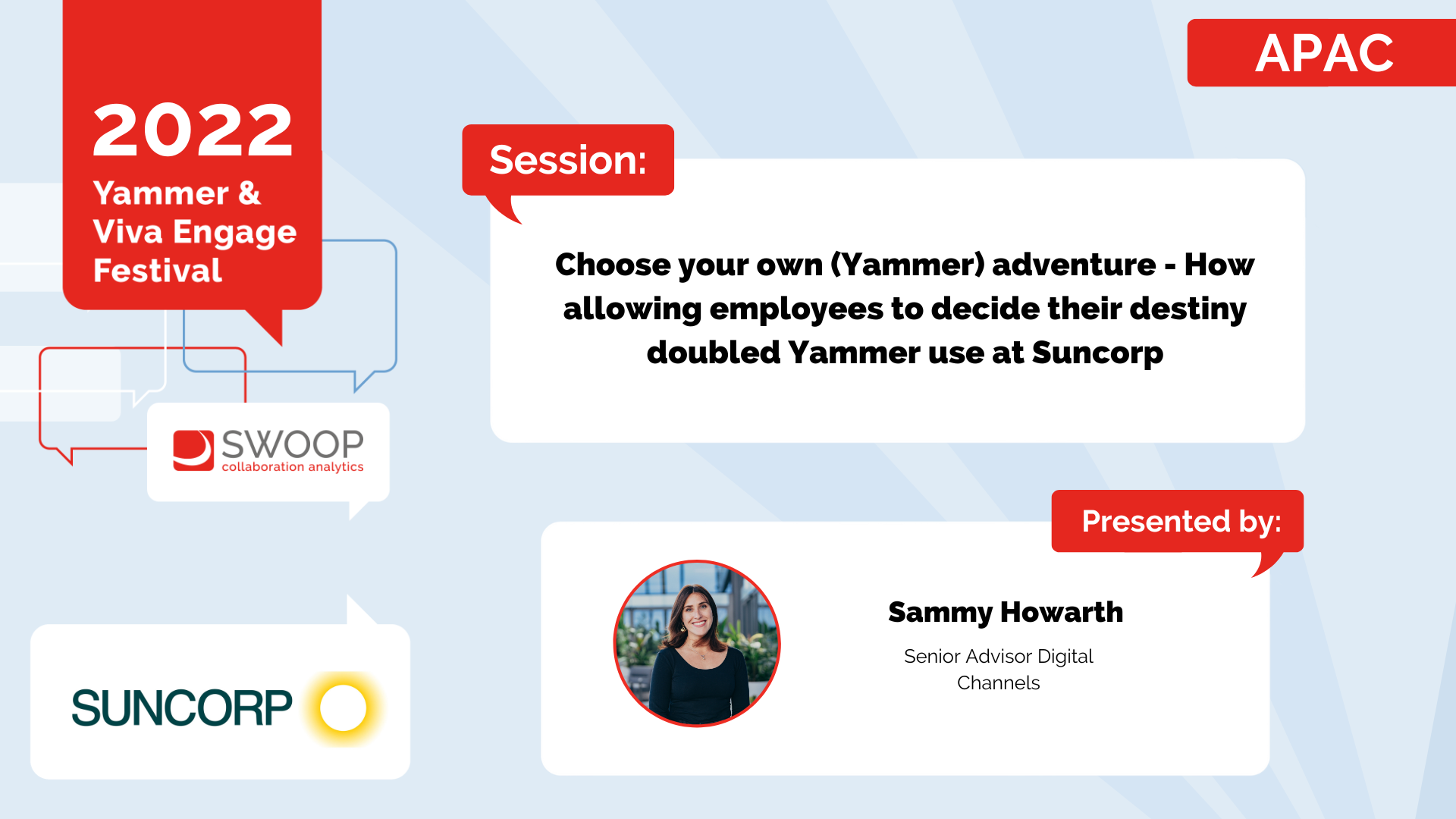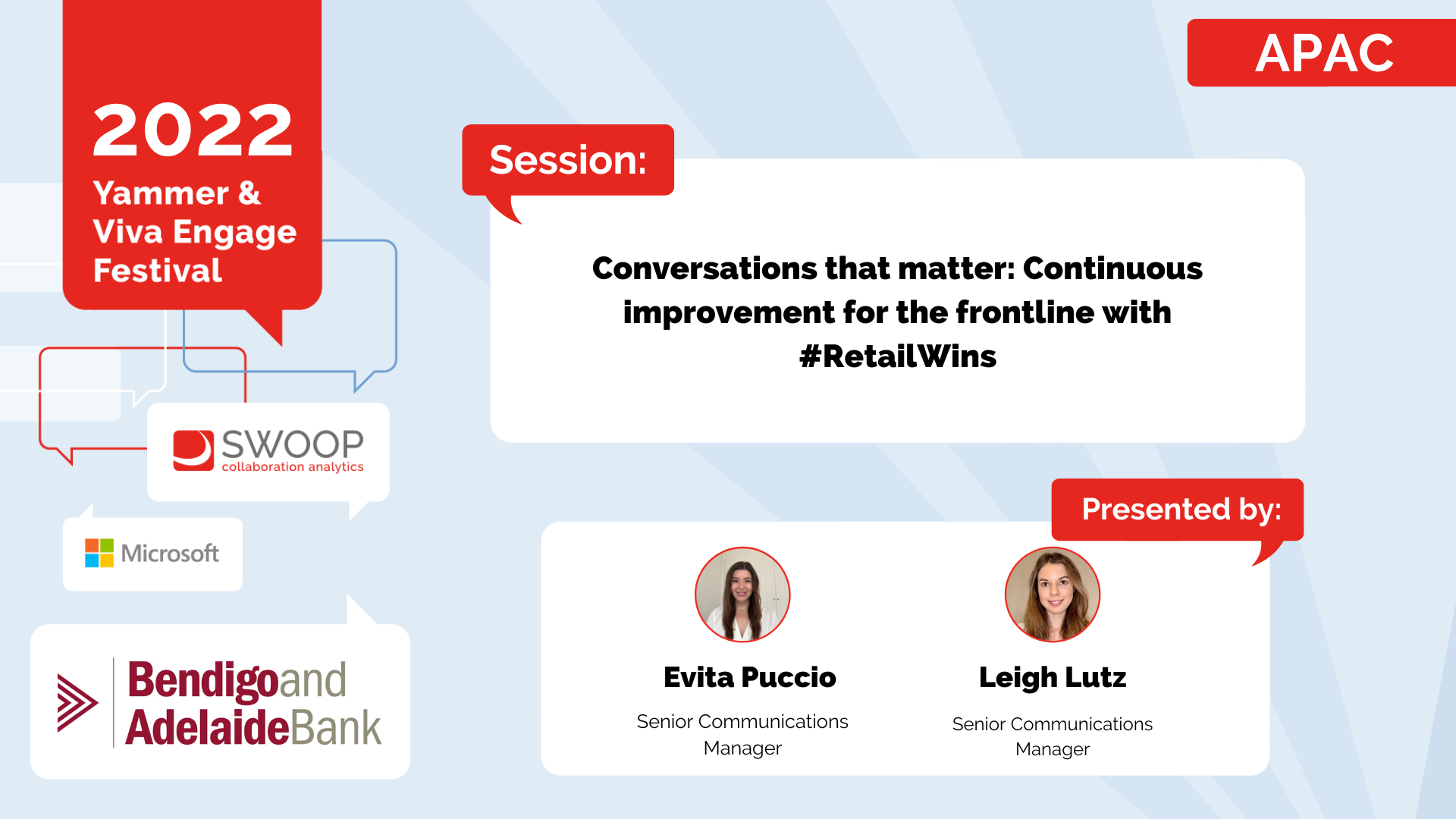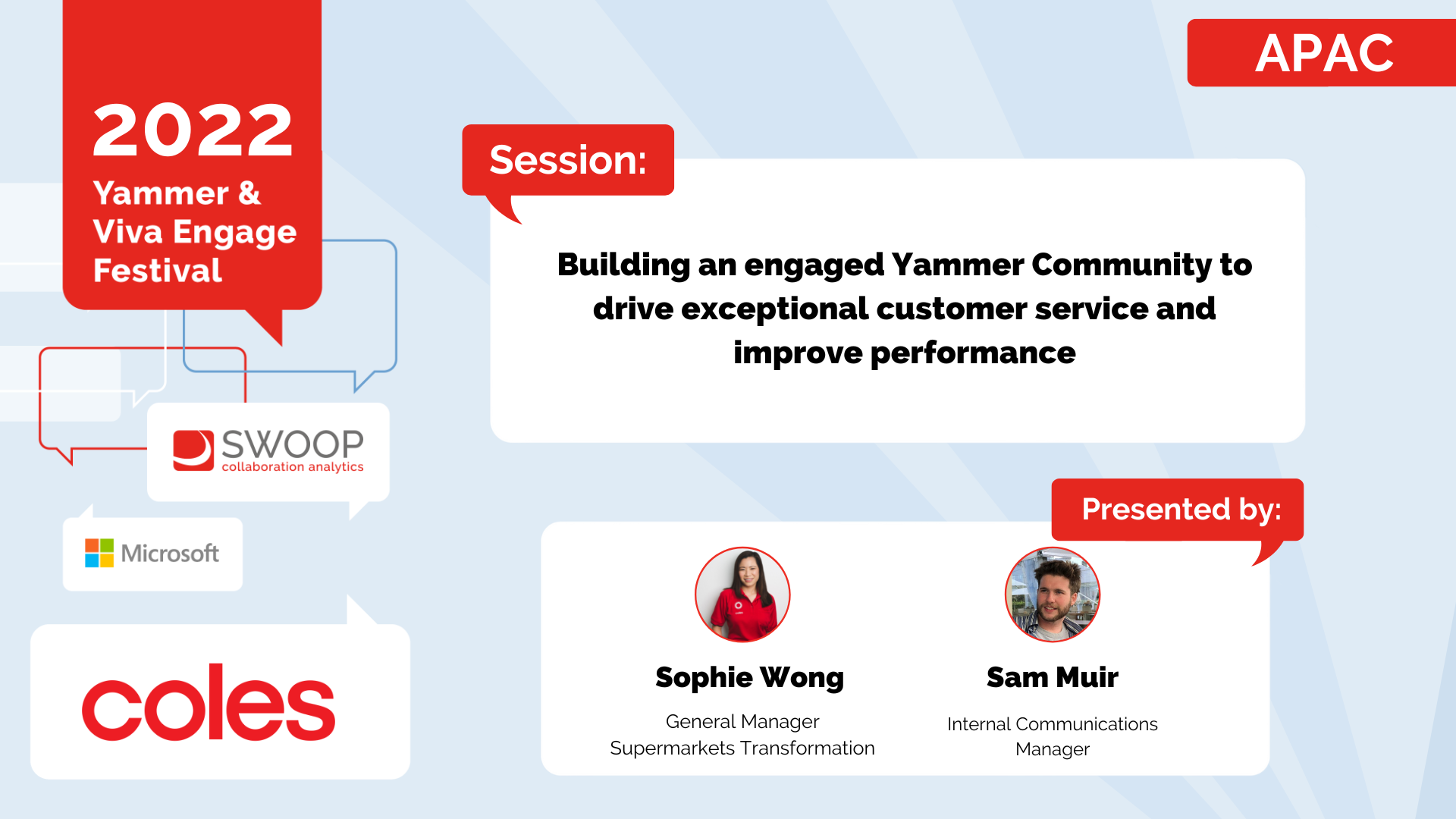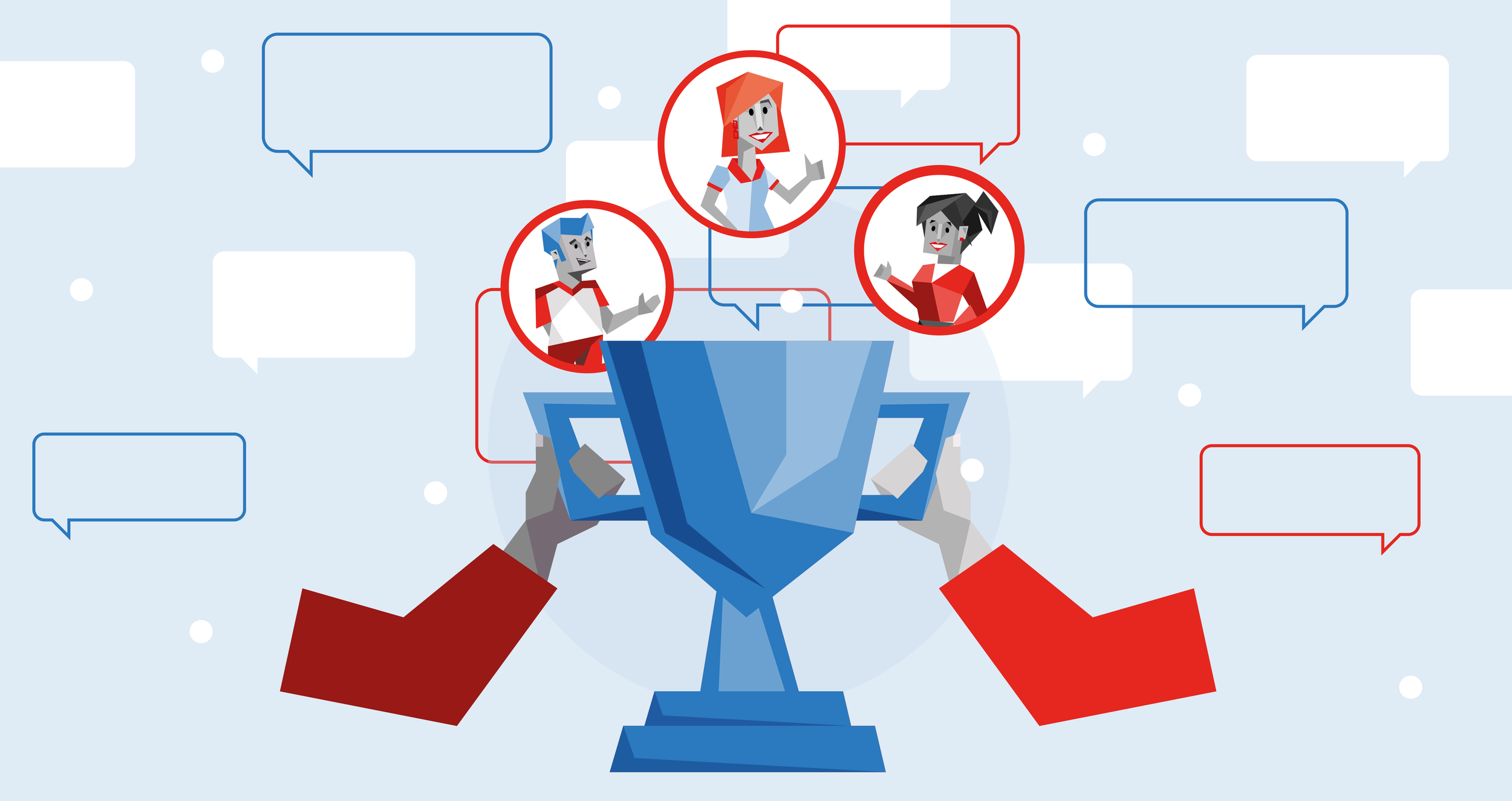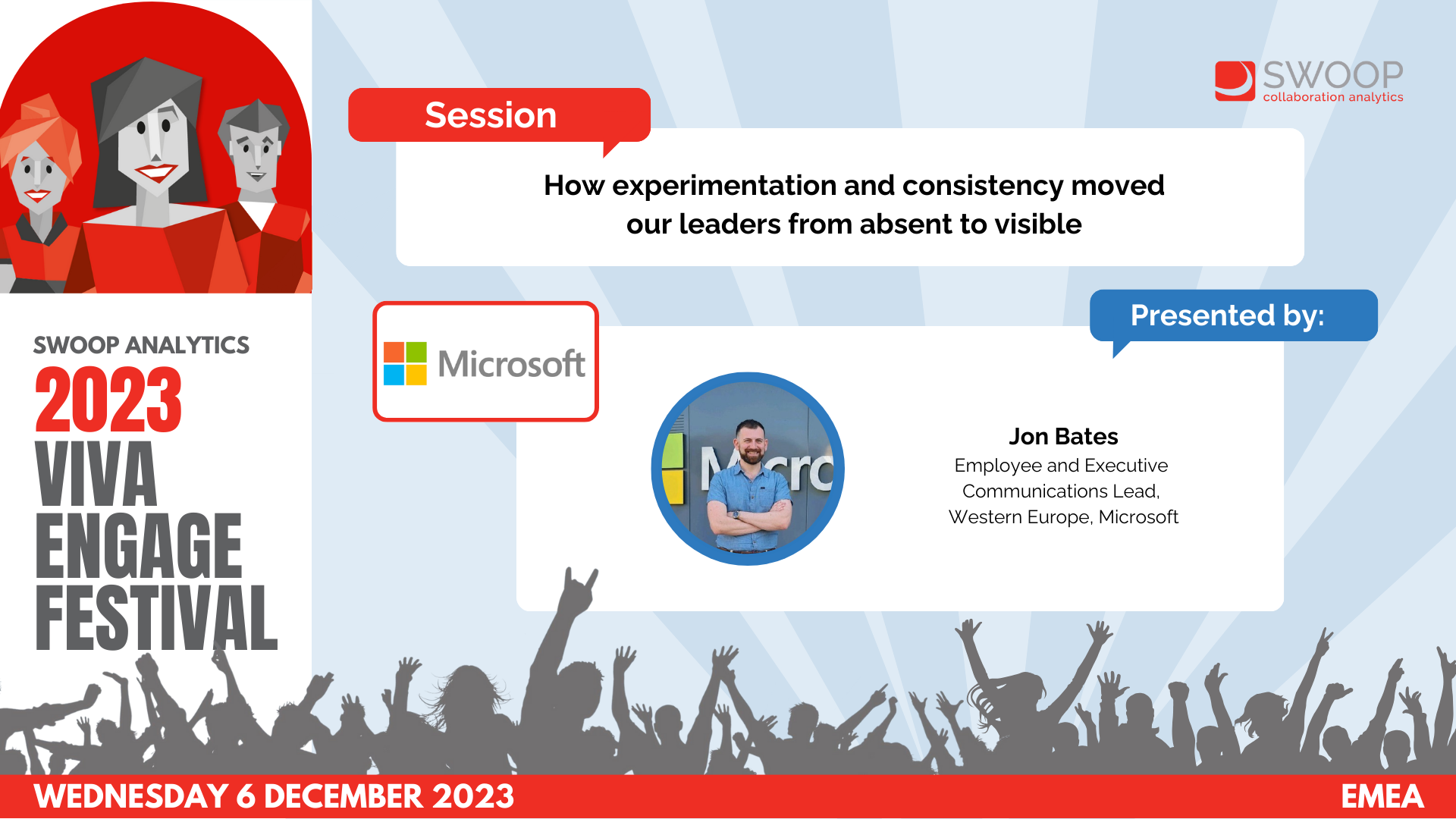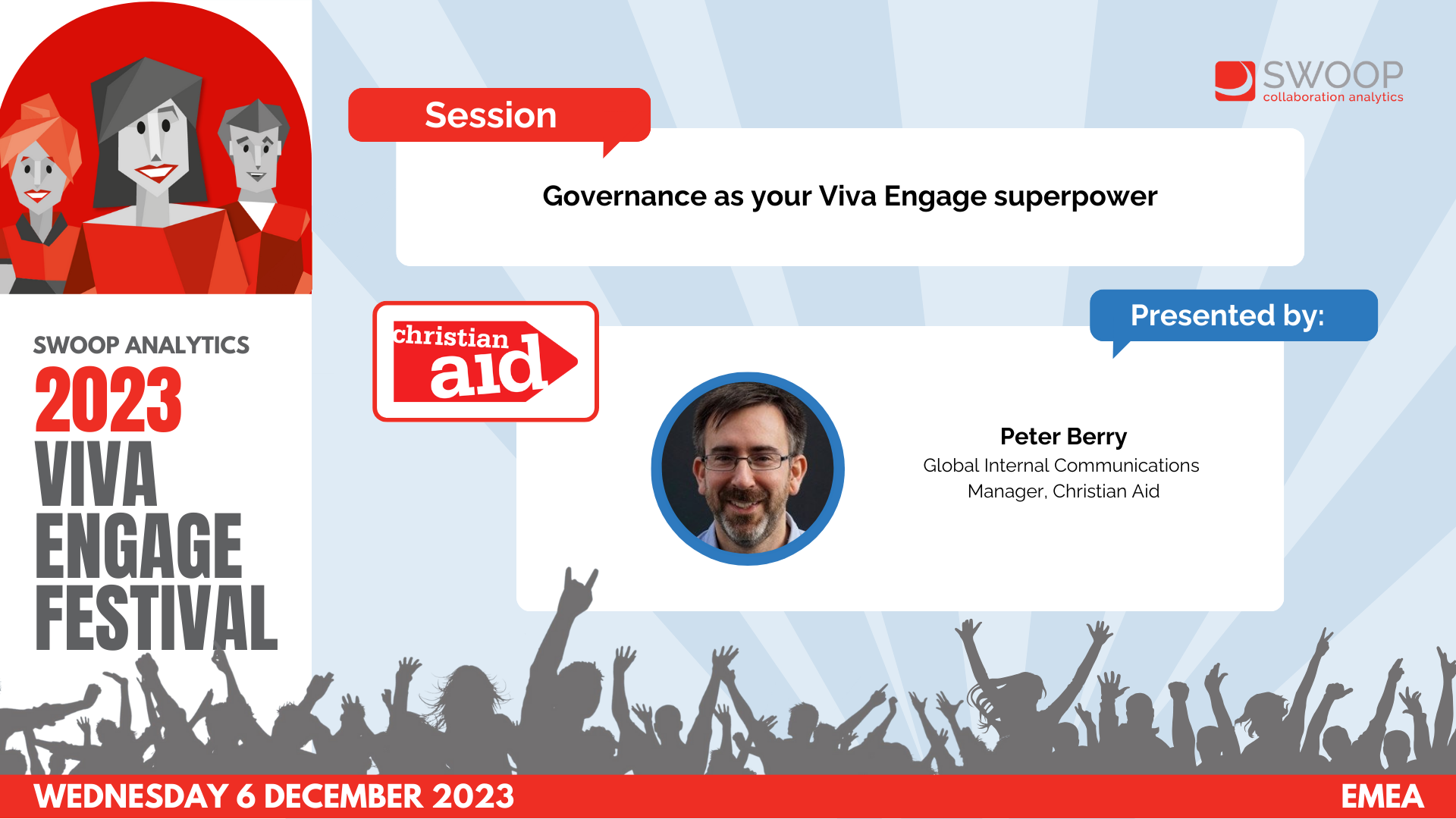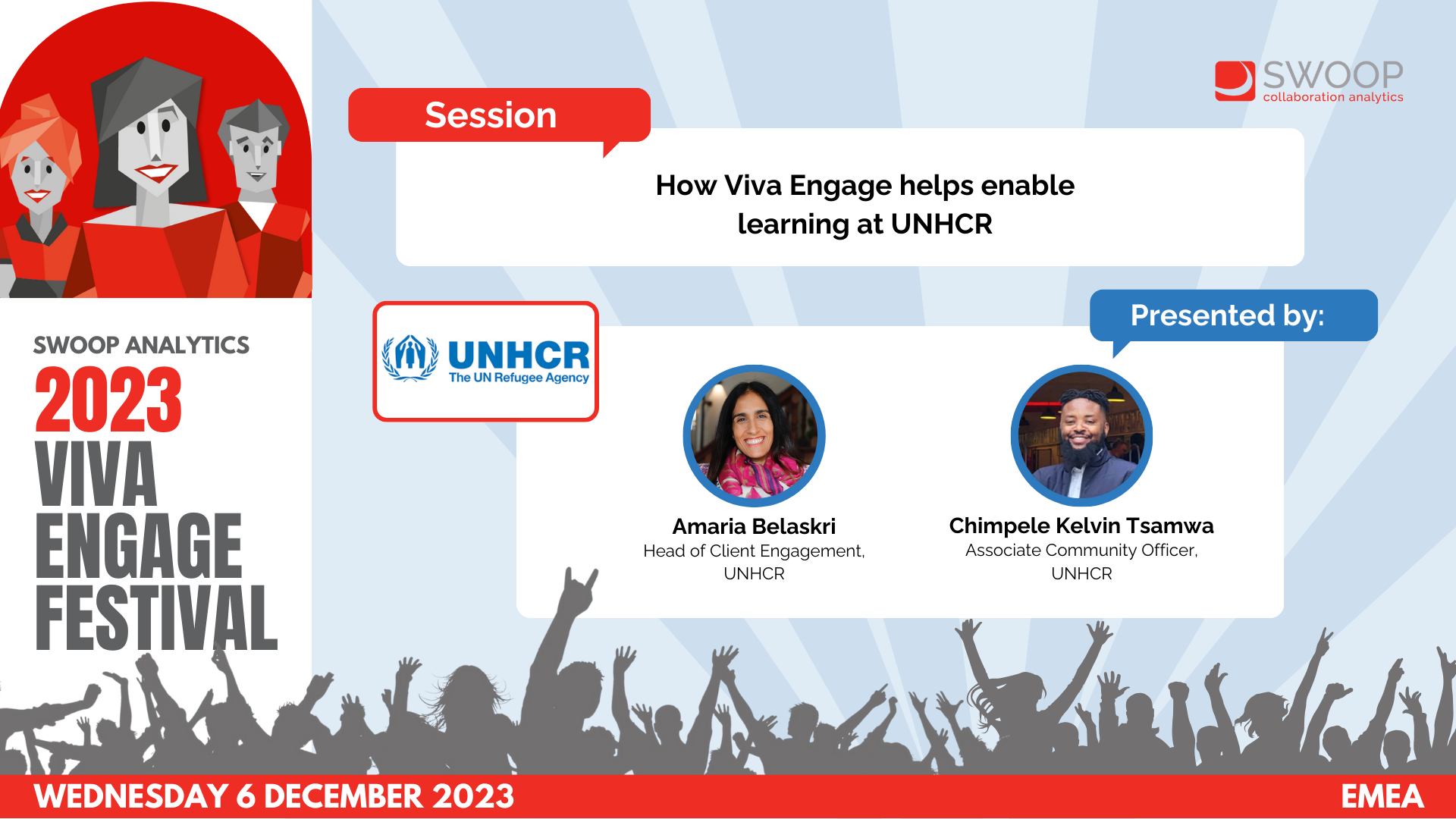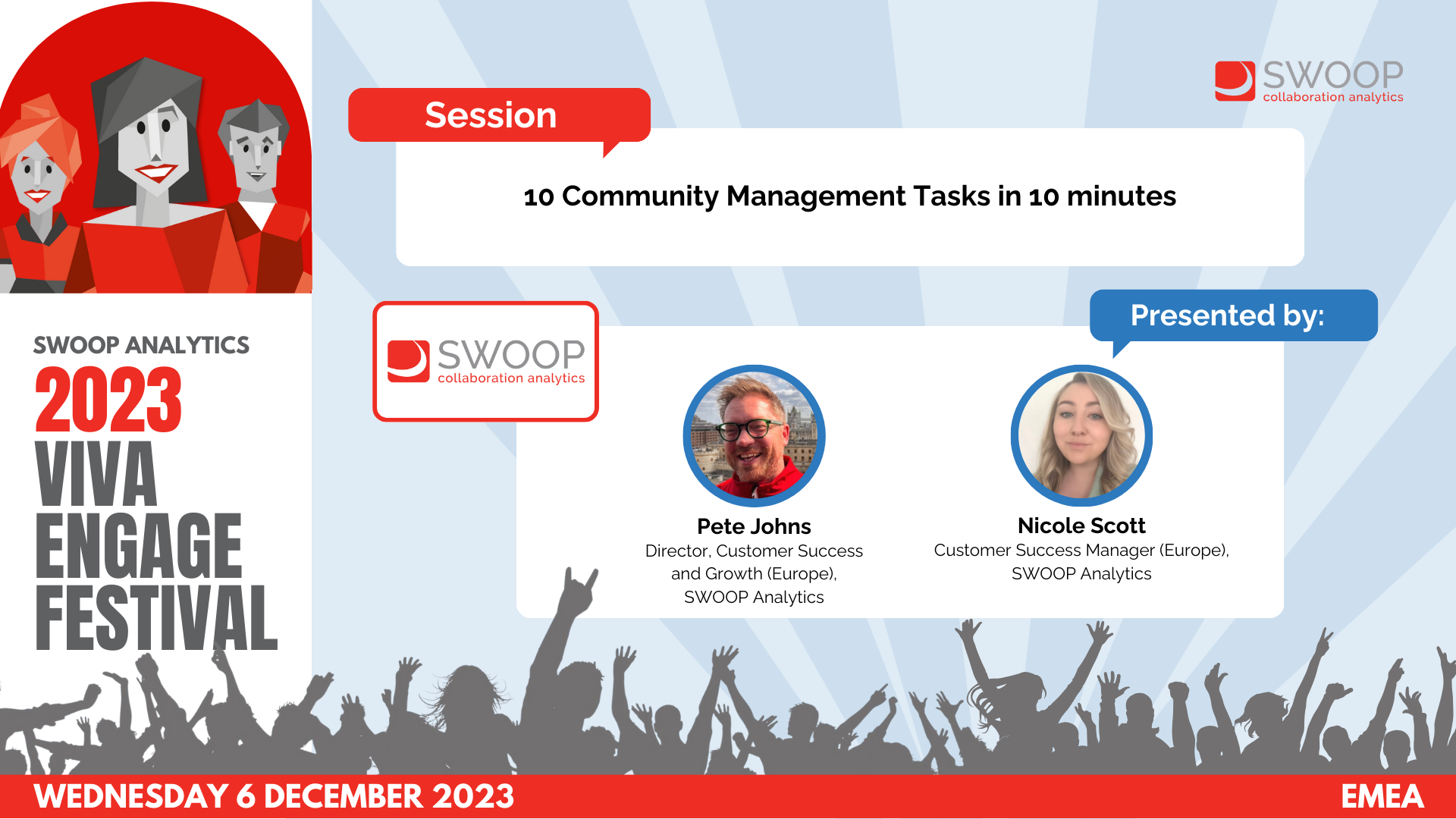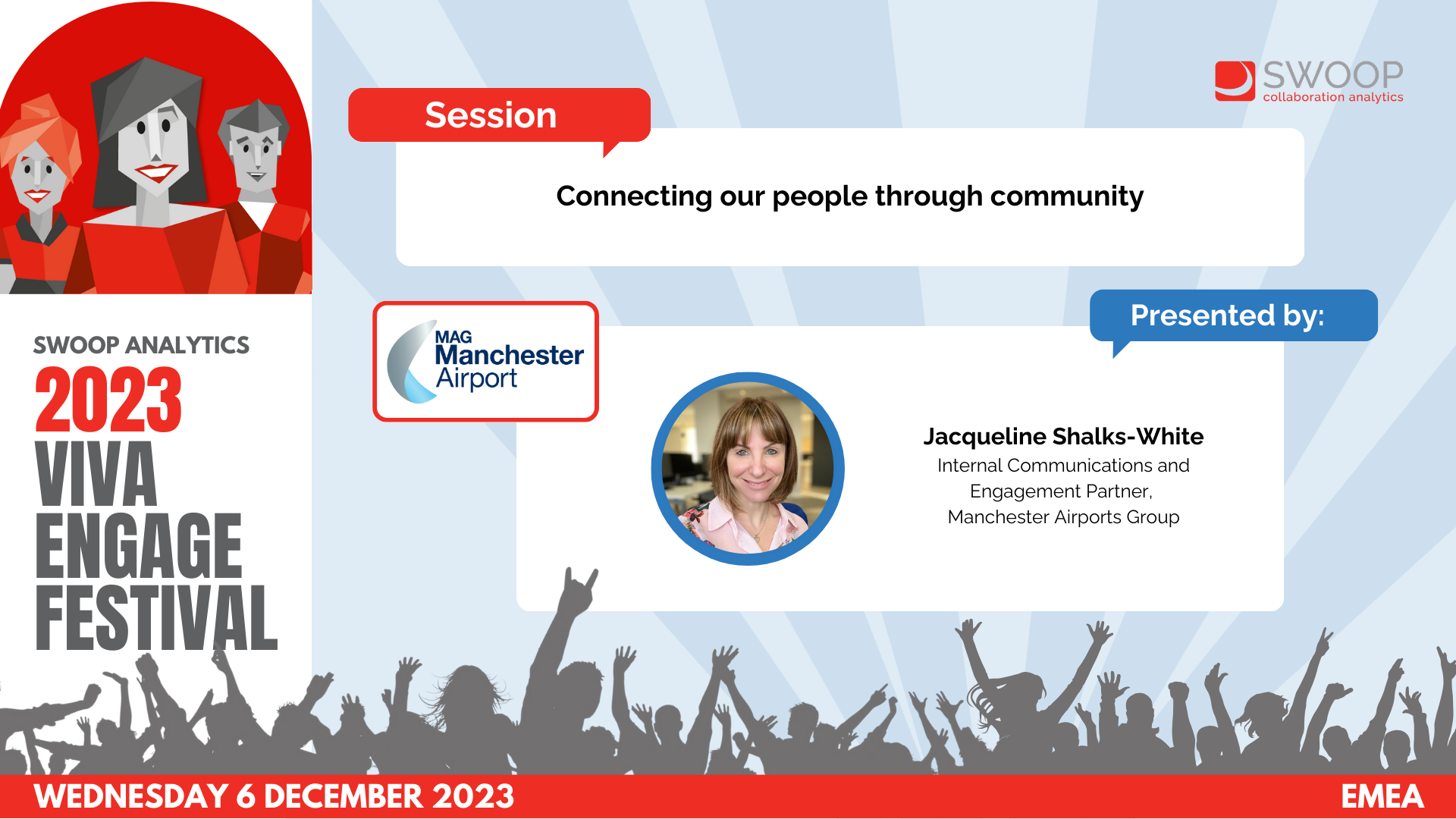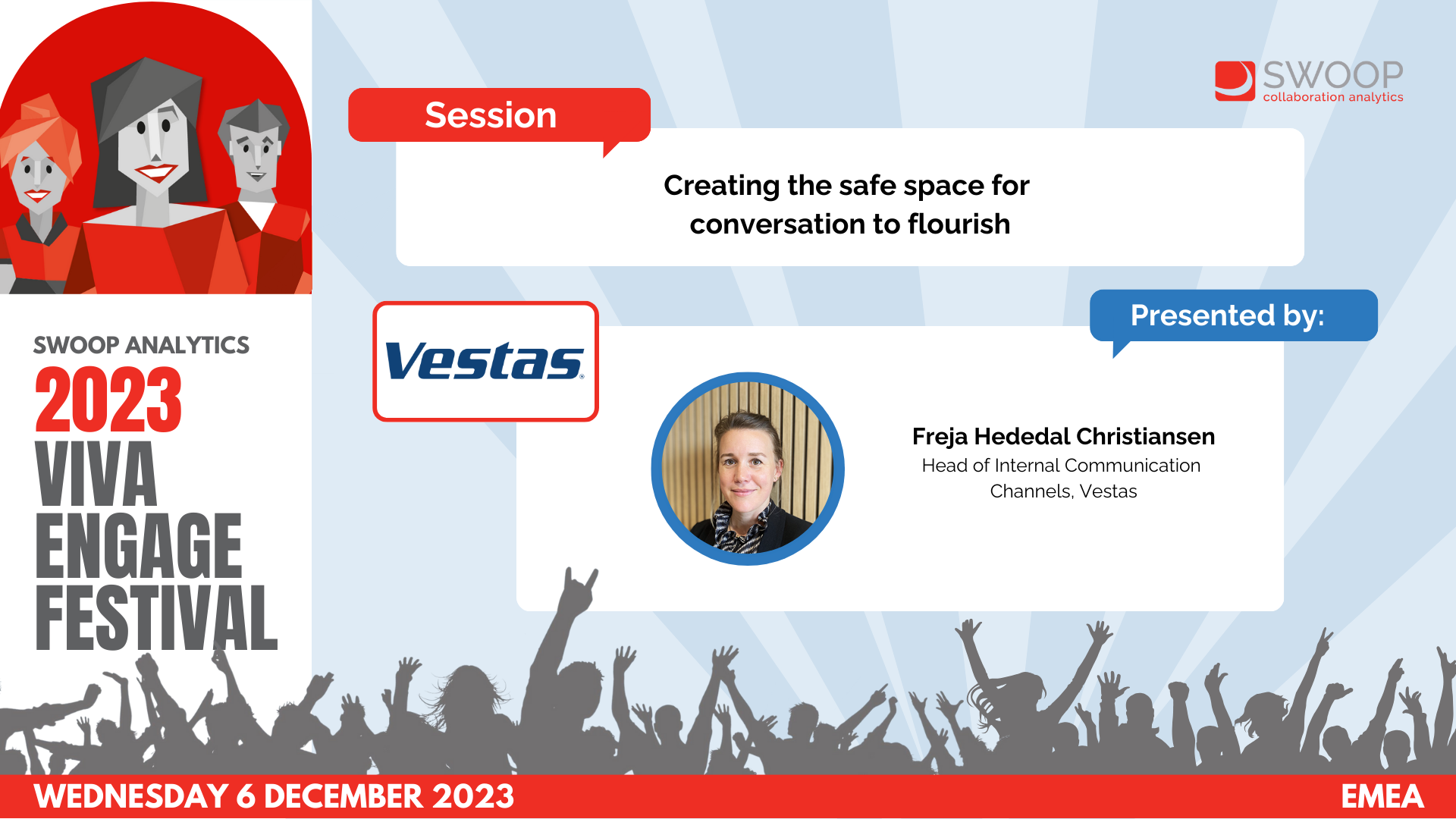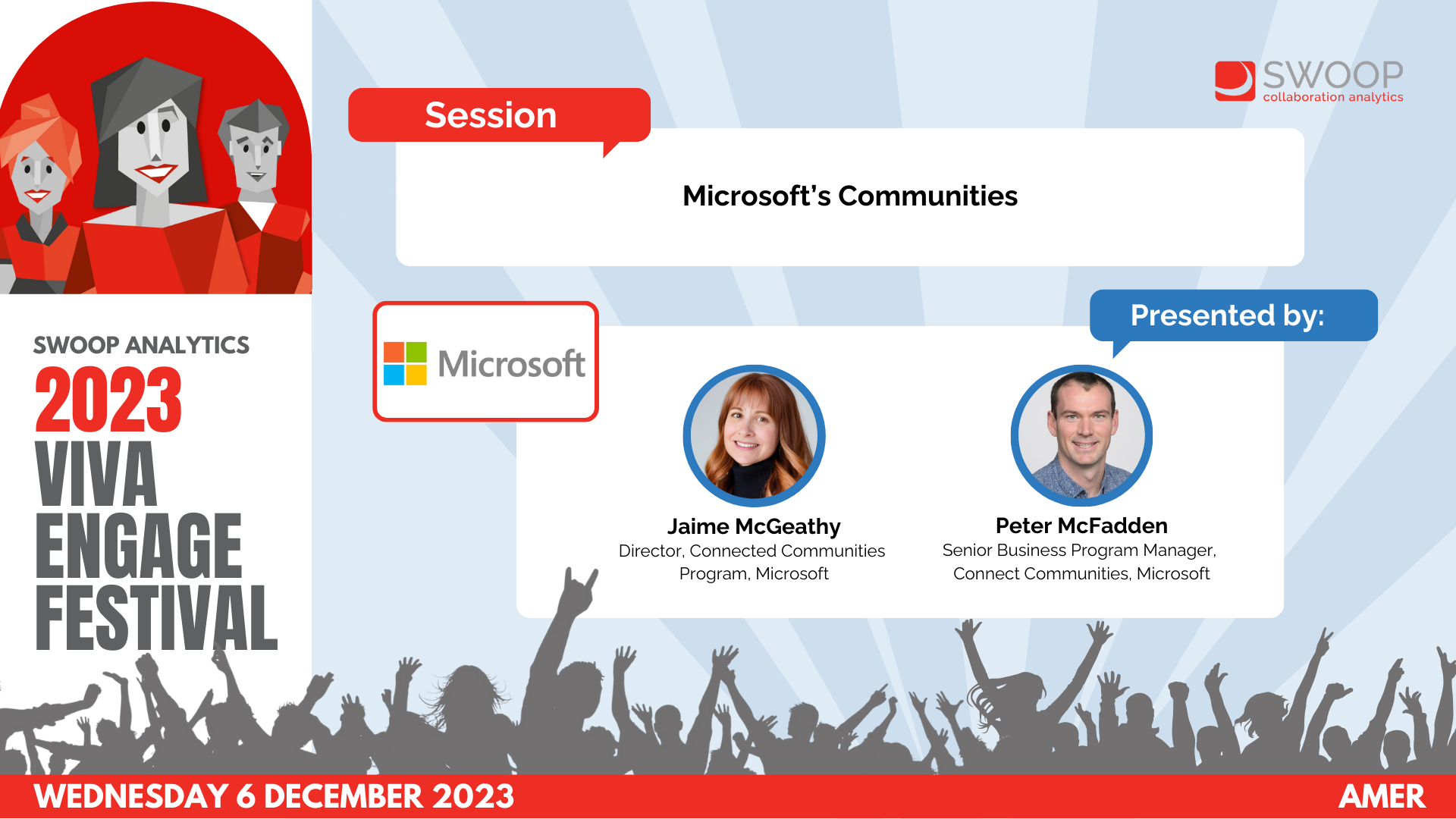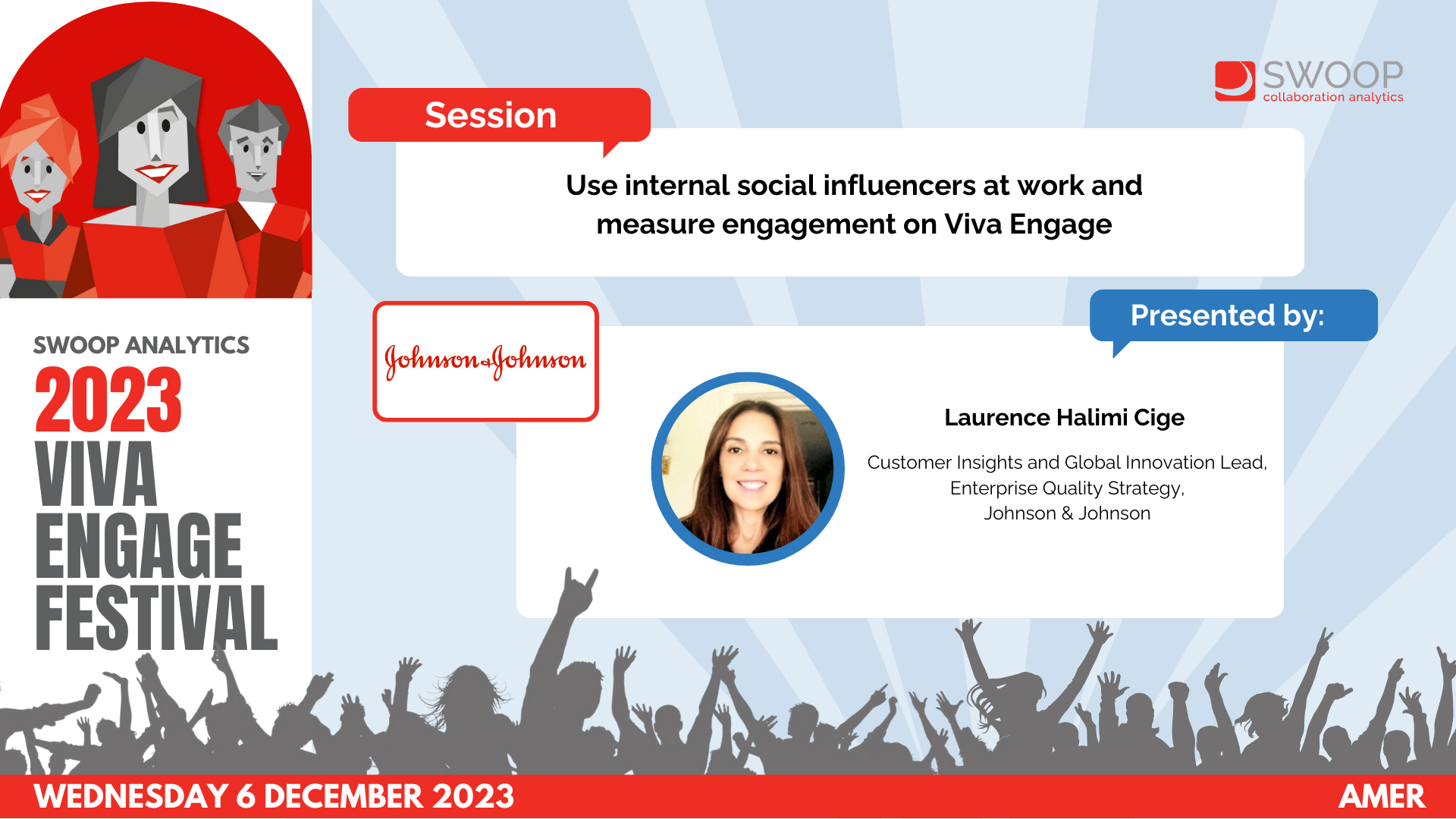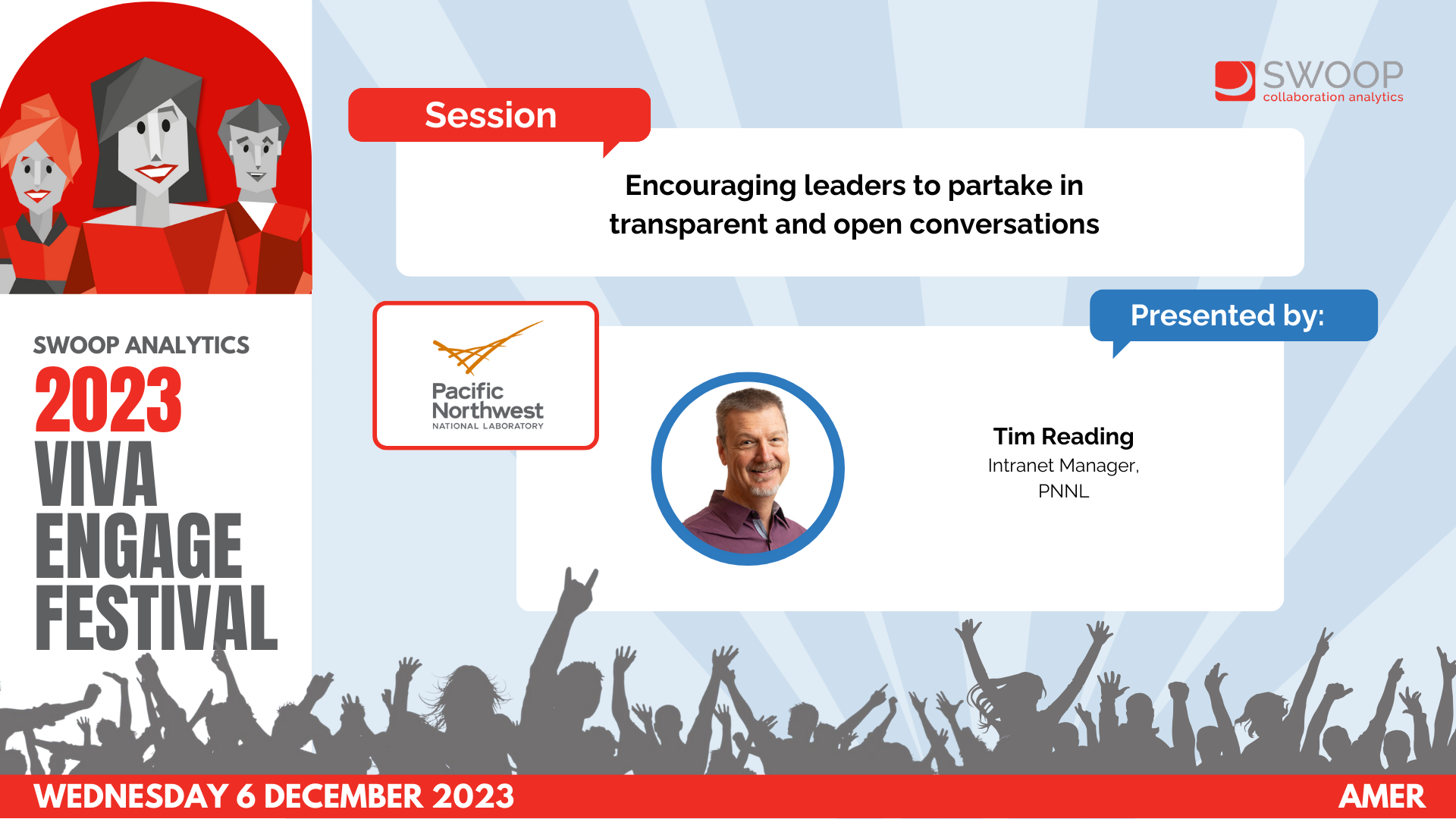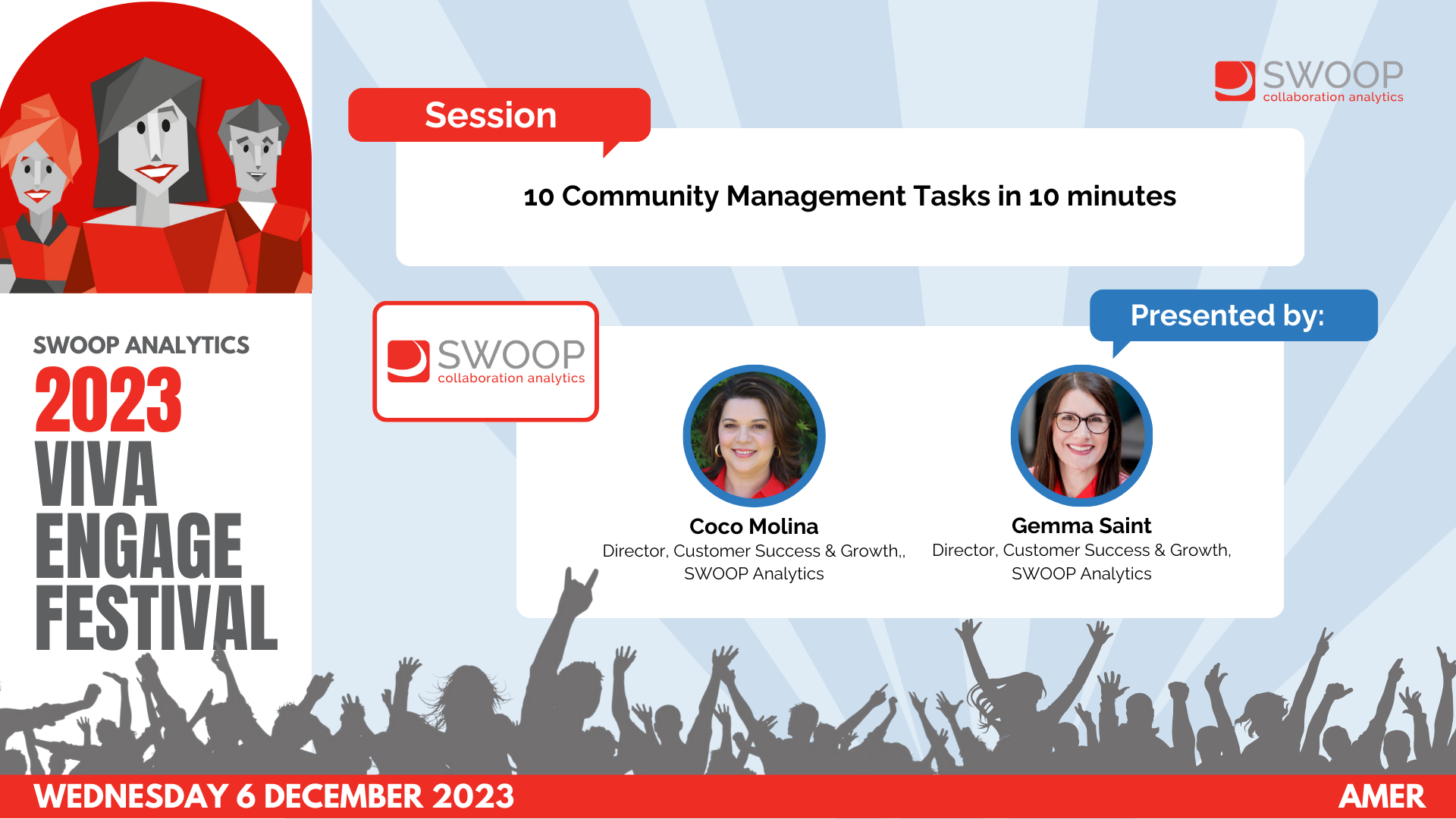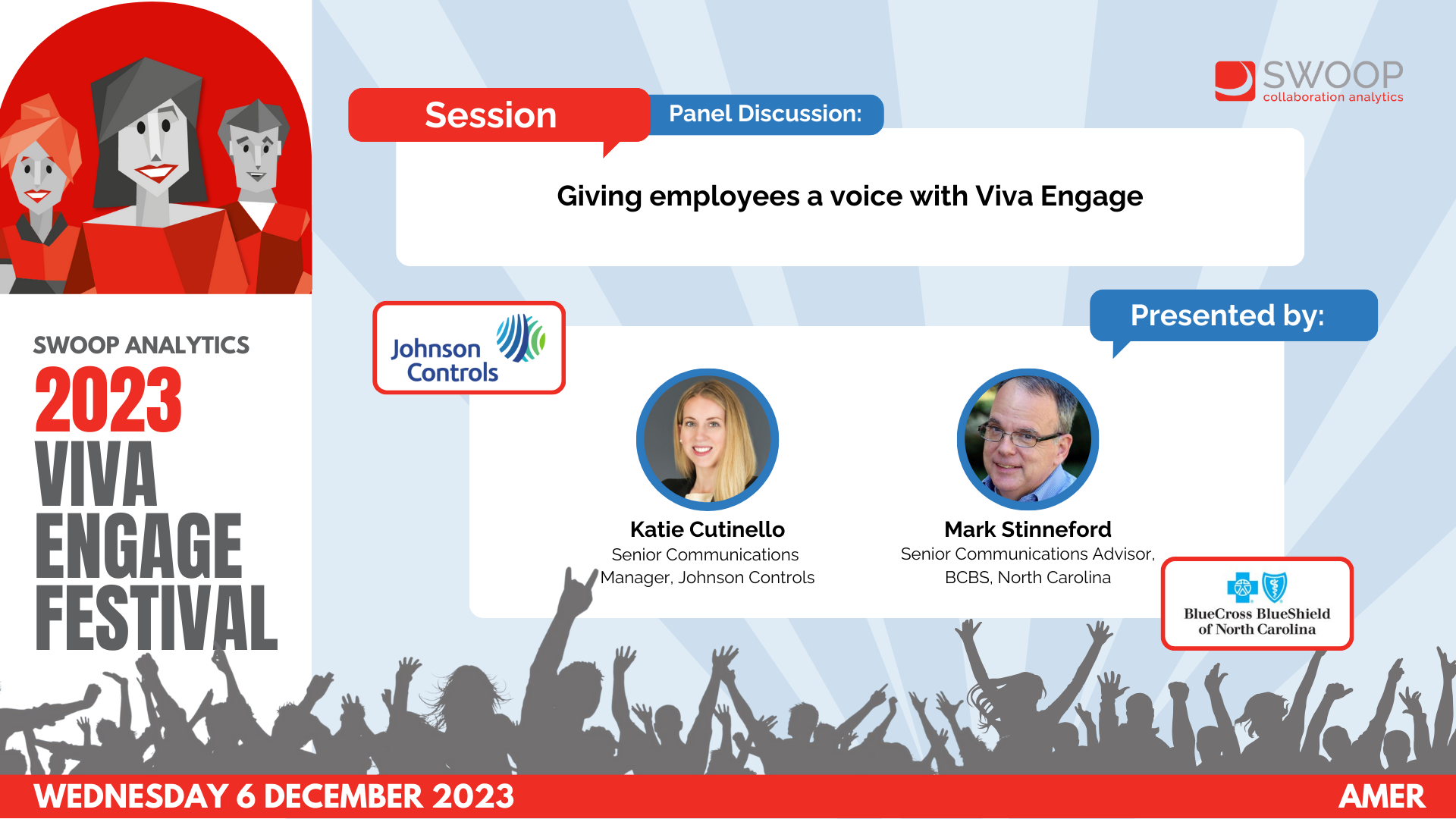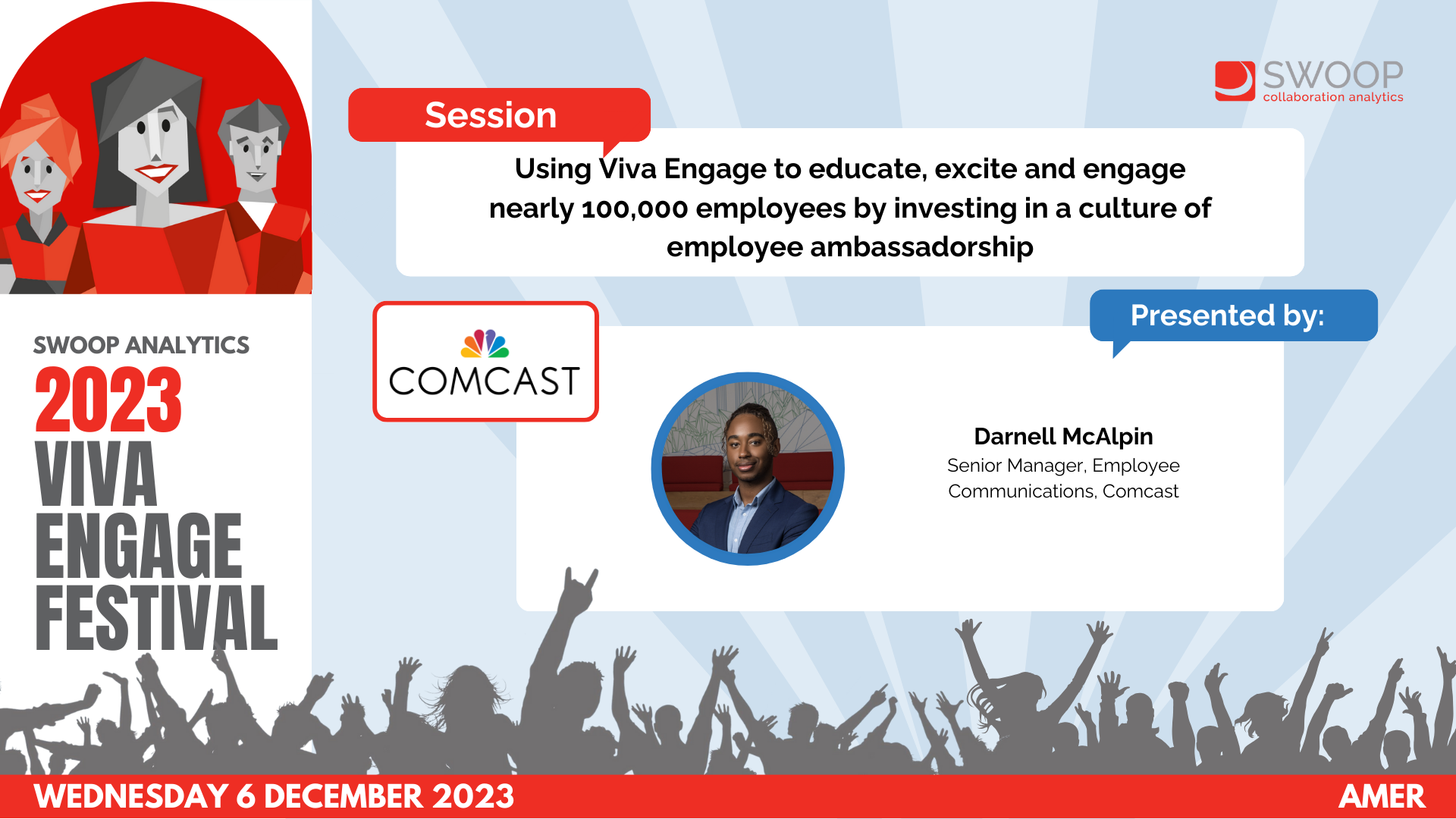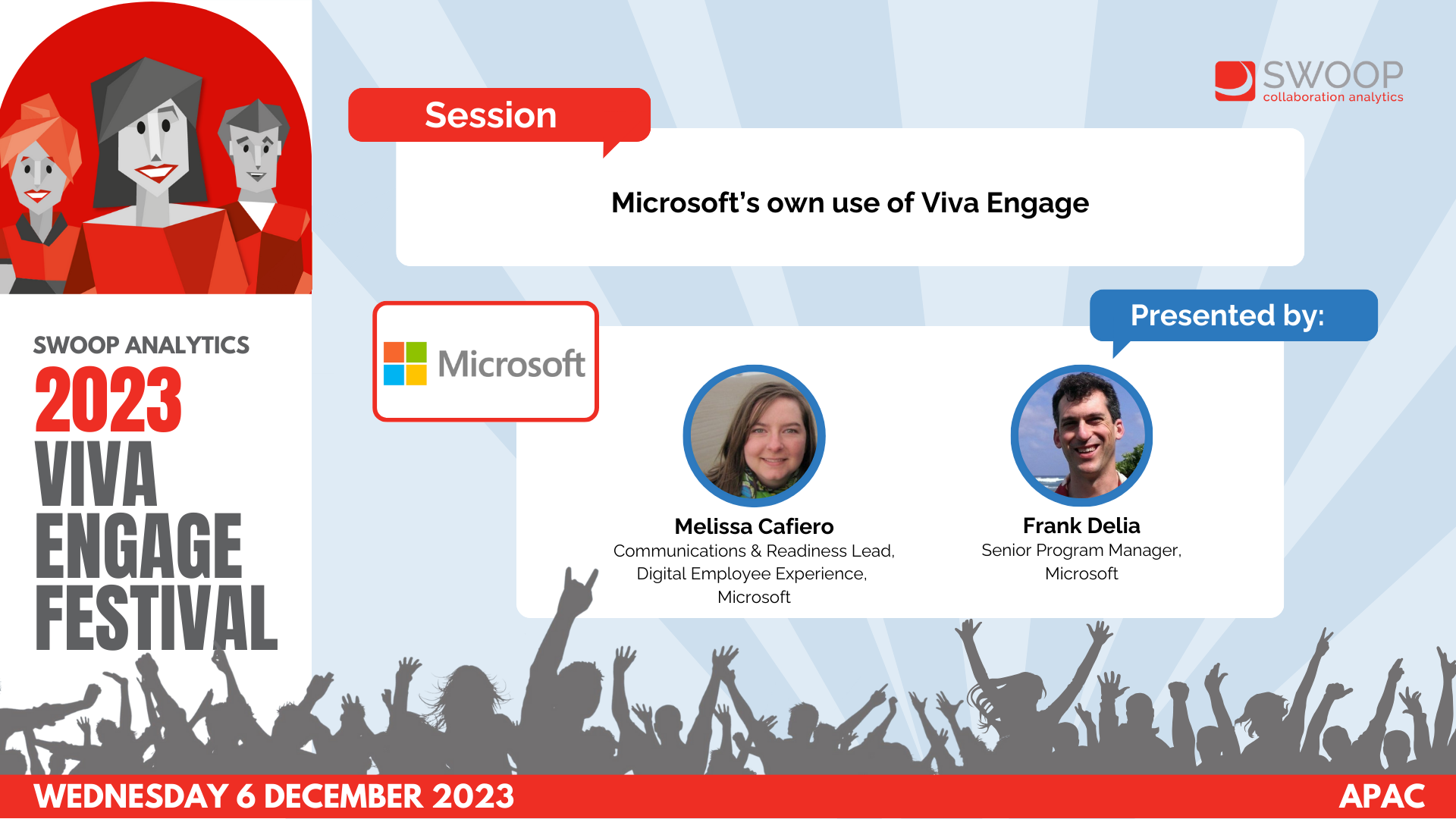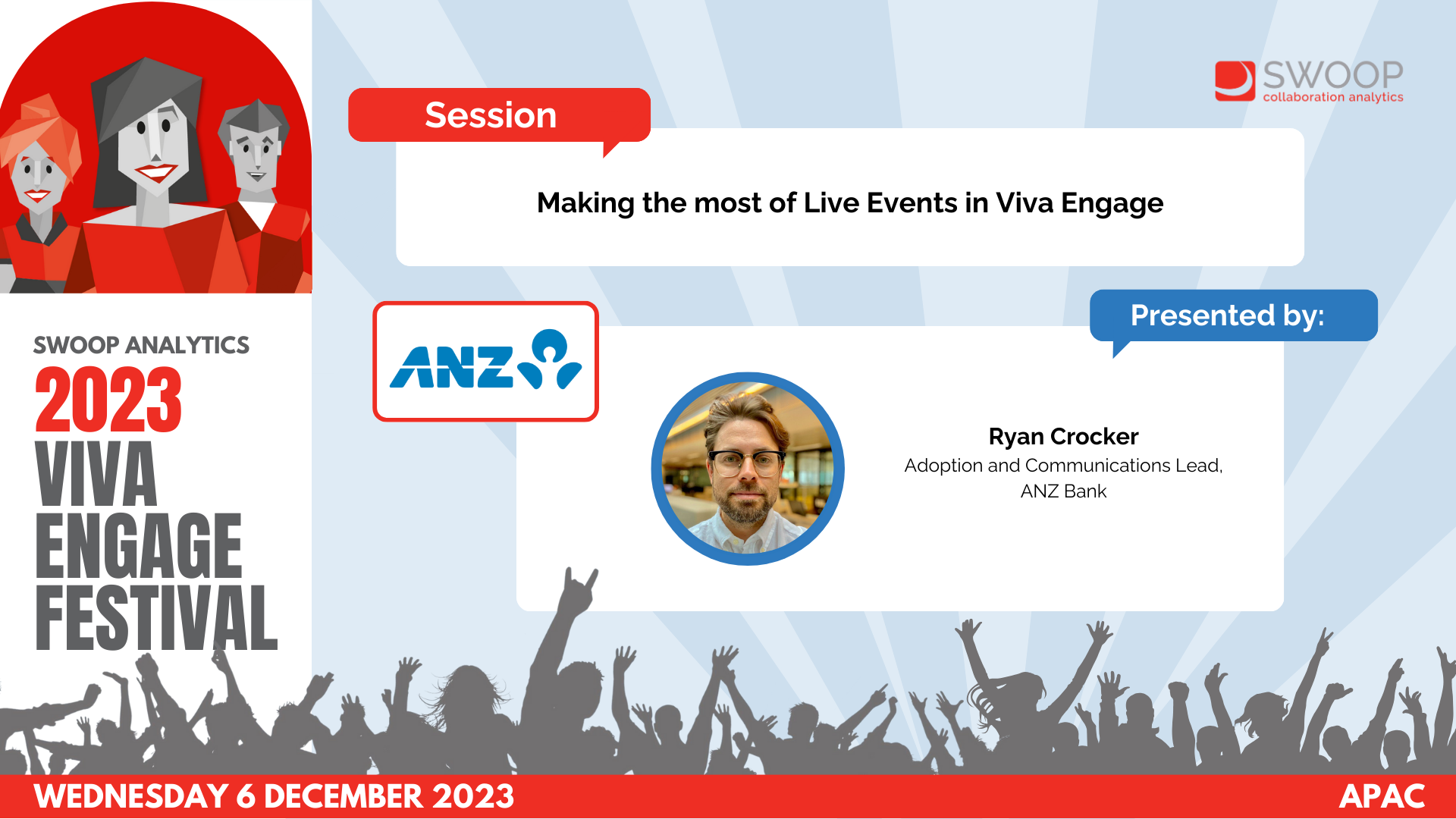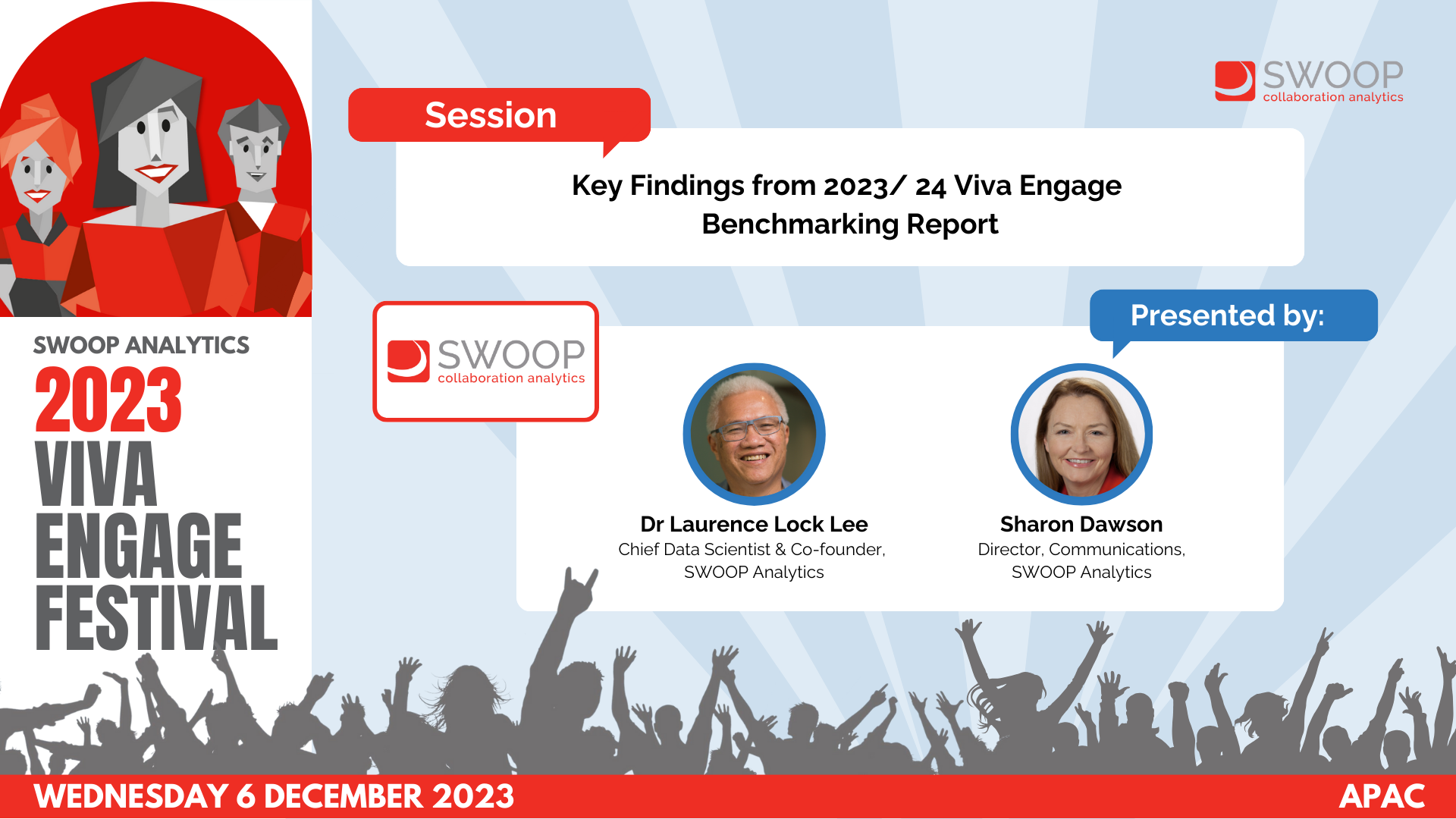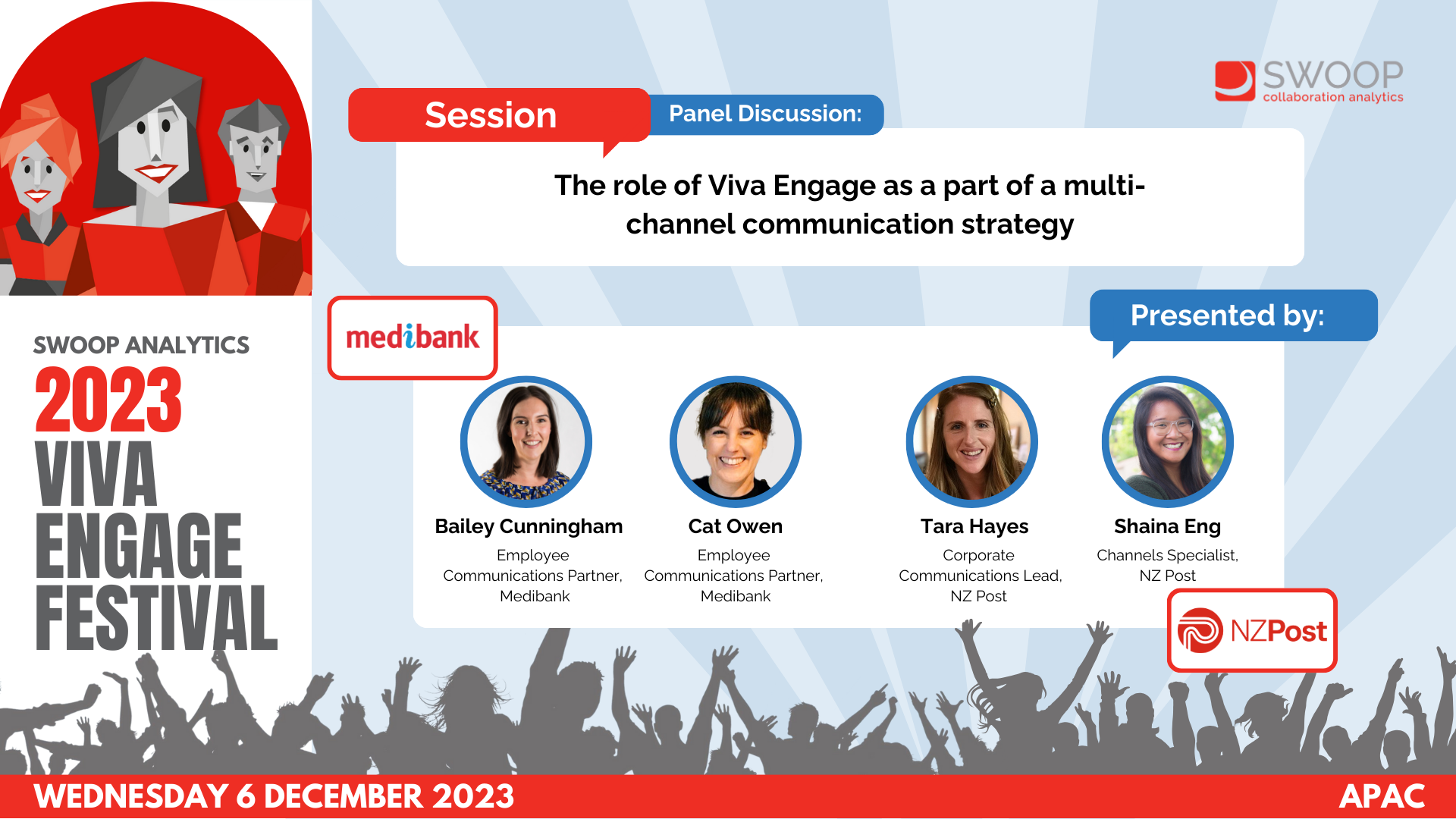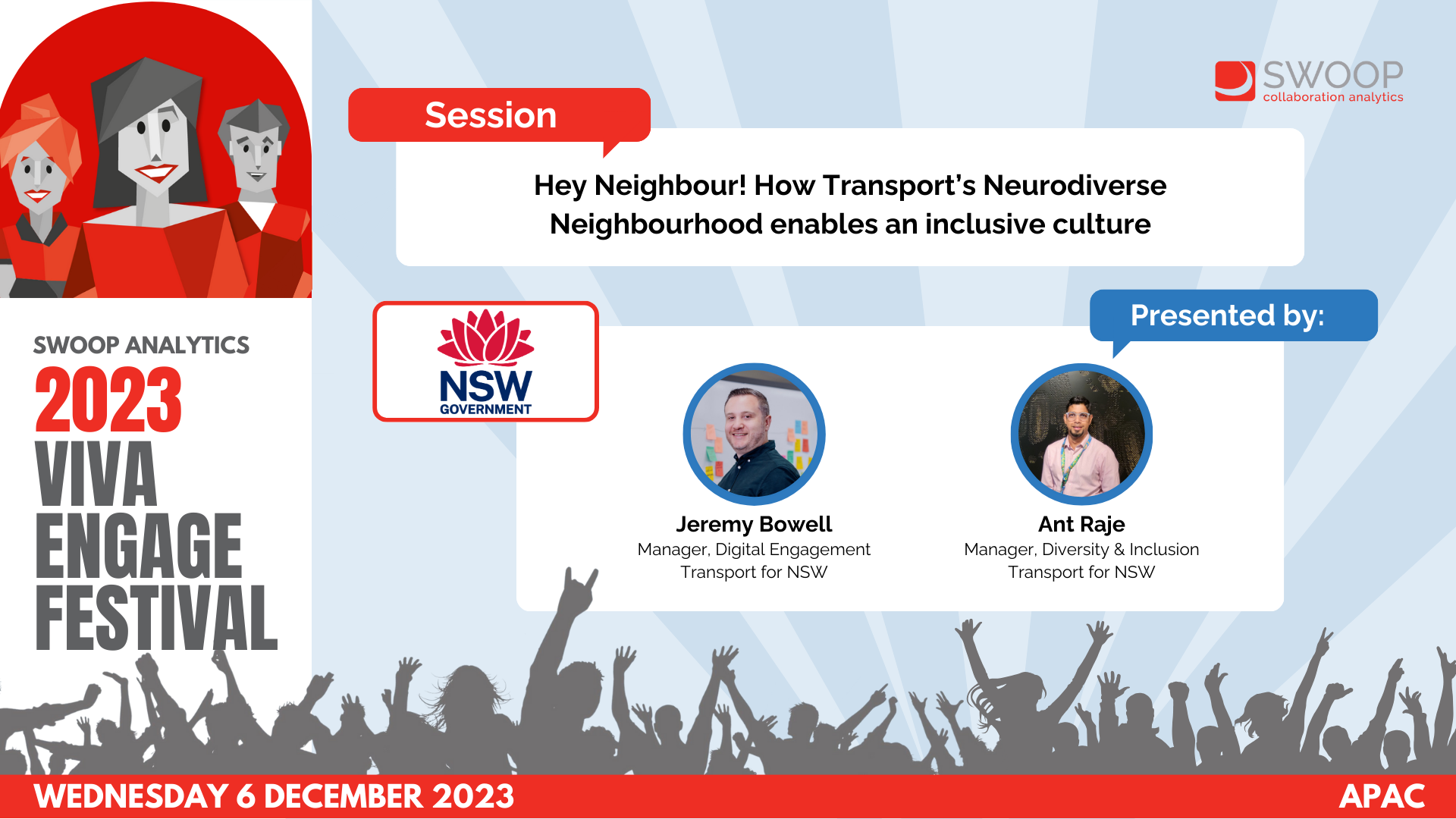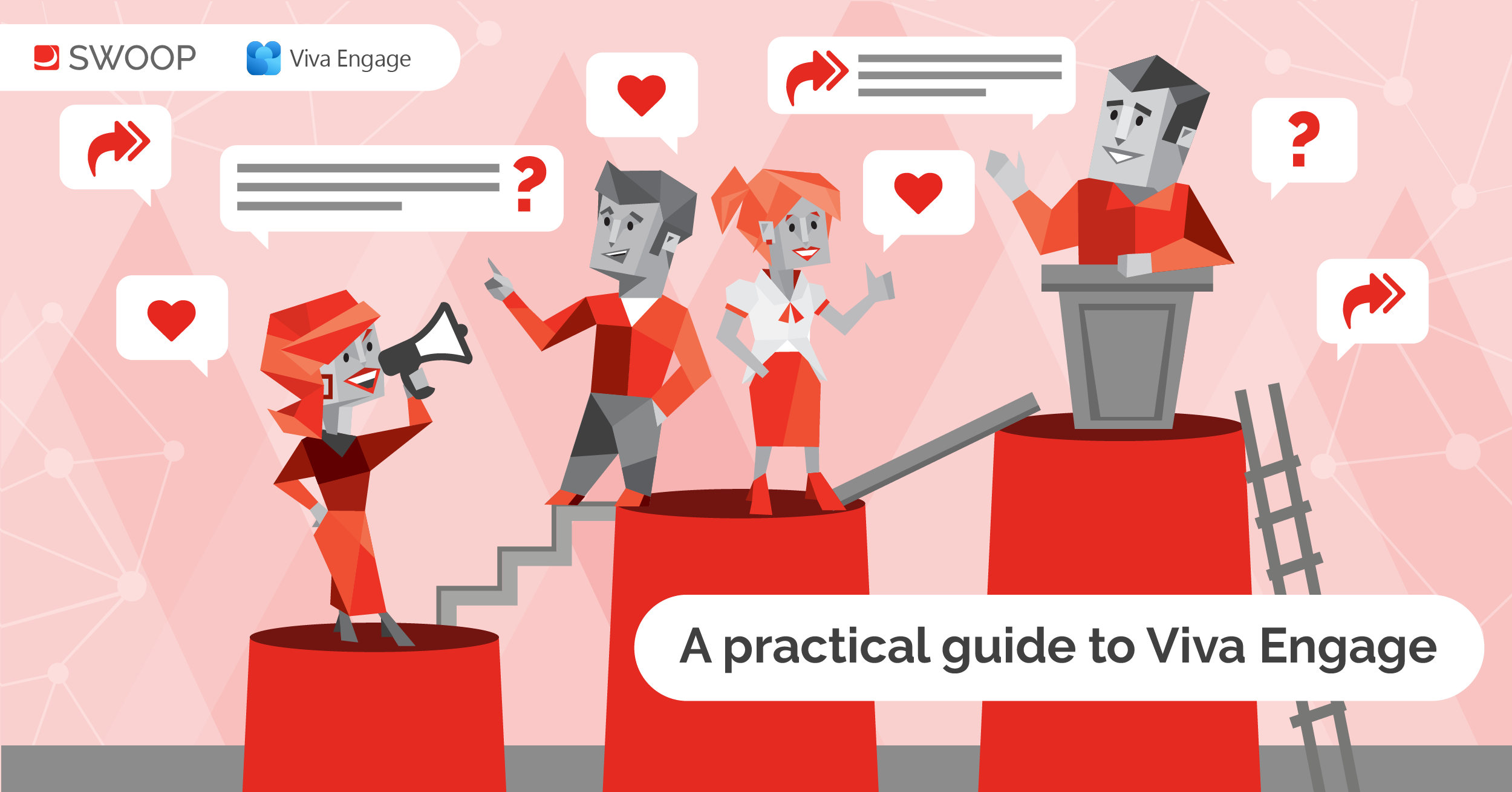NSW Department of Customer Service: Our People, Our Stories - How a government department is using Yammer to create a place of belonging
APAC | Yammer & Viva Engage Festival 2022
Find out how Alana Bradley from NSW DCS uses an initiative titled: Our Peoples Our Stories! Which are a range of posts that focus on telling the stories of DCS team members. DCS have used this program of work as a way of telling stories of care, belonging and inclusion at DCS that aligns with their strategy.
-
Before we dive into the presentation, I wanted to firstly introduce myself. Emily touched on it before, but my name is Alana and I'm our Internal Channels Advisor at the Department of Customer Service. So with my time with you today, I'm going to be stepping you through a Yammer campaign that our Employee Experience Team created.
It's called Our People, Our Stories. And Our People, Our Stories was an initiative that we created to better foster a culture of inclusion and diversity, which then transformed into an evergreen project of work in support of our care and belonging strategy. So before we kick it off today, I just wanted to firstly ask you join me in acknowledging the Aboriginal peoples as the traditional custodians of the lands of which we live, work and walk on today.
DCS pays our respects to the Elders past, present and future and recognises and remains committed to honouring Aboriginal and Torres Strait Islander peoples' unique culture and rich contribution to our society. It's also very important for me to acknowledge our Aboriginal employees who are an integral part of our diverse workforce here at DCS, some of which we've been honoured to share their stories in Our People, Our Stories body of work as well. Okay, so this body of work was born out of Inclusion Month initially this year in March, and it was based on the ABC Doortrait's Working From Home series.
The Doortrait series was a twist on the usual family portrait capturing Sydney's household during the city's lockdown. And it had the goal of sharing the stories of Sydney's siders while documenting the pandemic from a distance. Our wonderful employee experience team took this concept and transformed it with their concept.
They wanted to utilise Yammer as a place to share and hear from the people at the heart of DCS while showcasing and celebrating our diversity and inclusion. But as Inclusion Month came to an end, we saw this incredible impact that the work was having on Yammer. And so we wanted to shift the stories that were being told from inclusion and diversity to focus more around care and belonging.
Here at DCS, I'm lucky to be joined by over 12,000 people who I work alongside each and every day. Of those 12,000 people, we are leaders, analysts, policy makers and regulators. We're app developers, cyber security experts and website writers.
We're customer service representatives, educators and inspectors. And so with 30 plus agencies made up of over 12,000 people, we are left with 12,000 incredible, unique and captivating stories. So for a little bit of context on how this Yammer concept feeds into our broader strategy, our care and belonging strategy shares our cluster's commitment to inclusion, respect, care and belonging for our people.
And the strategy celebrates our ongoing diversity and inclusion successes and outlines the ways in which we will continue to deliberately foster a culture of care and belonging. So with this strategy in place, it's so important that we're committed to ensuring our people flourish in a culture of care and belonging where they feel included and respected and supported to bring their whole selves to work. Now, this is where Yammer comes in.
Yammer is a really important piece to this broader strategy. To us, we're utilising Yammer as a platform that brings to life this larger strategy to showcase our people's stories and to invite others to celebrate, thank and connect with each other over these stories. So it's through our people, our stories here at DCS that on Yammer, we created an inclusive workplace that values and celebrates diversity and representation for the people of which it serves.
So to date, we've showcased over 20 of our people's stories and I would absolutely love to take you through all of these stories, but I am just going to touch base on two. So you can see the diversity that we have amongst the stories that we share. So the first story that I'll touch on is titled Pronouns Save Lives.
And within this post, we had one of our team members, Jack Brines, talk through his experience of being assigned to female at birth and having transitioned to being himself a man of trans experience. Jack shared his story of working at DCS while being a man of trans experience and he used his story to share why it's so important that we make sure we share our pronouns in introductions at work and through our email signatures. So we shared Jack's story on the International Day Against Homophobia, Biphobia, Lesbophobia and Transphobia here at DCS.
Another awesome story was for Carers Week and our team member, Carl Vets, shared his story about caring for his wife while working full time. In his story, Carl took us through how him and his wife have learnt to roll with the punches while she lives with a tumour in a femur. And Carl talks to how he manages working full time while being a carer for his wife and stating that doing something completely different other than being a carer for her was so important for his wellbeing.
A quote that I loved from Carl's story was that it's not always rosy as they are reminded from time to time as a new symptom appears or a friend that they've met on their journey passes, but they always find ways to laugh. So Carl used this in the comments section on his post to encourage leaders to challenge traditional views by breaking down the well intended structures to embrace new pathways. And I thought this was a really great example of how these stories encourage and advocate for two way conversations on situations that matter to our people.
It just really highlights that we're using this body of work as a platform for our team members to share their stories and to talk to ways that we can support them and others in similar situations. Okay, so now that I've taken you through two of our stories and you can see how real and raw these stories are, I wanted to give you a quick snapshot of the impact our people's stories have had on our Yammer platform here at DCS. So across the 20 or so stories that we've shared, we've seen 152 team members leave comments of encouragement of thanks.
We've seen over a thousand reactions on these posts and we've had over 51,000 people viewing our people's stories. So not only does content like this really encourage engagement on Yammer, it clearly sets a standard for sharing collaboration and connection on the platform, which we would all know is so incredibly important. Okay, so now that I've given you the background context and the impact that this type of work has had on our department, I'm going to step you through how you can create your own Our People's Our Stories campaign in your organisation.
So over the next few slides, I'm going to share with you the formula that we've used to source our own stories. Our template that we use to create our posts, tips on how you can feed the initiative into your larger communication strategy and encourage your leadership engagement into our stories. And then lastly, of course, how to track the success of the campaign in Swoop.
Okay, so you understand the concept. So let's begin creating your own series of posts. We found that sourcing stories can be difficult at first when you're trying to gain momentum in the planning stages of the campaign.
But it's really important that we always remember that no matter how big or small your organisation is, you've got as many stories as you do people and sometimes even more stories as you do people. So next, I'm going to step you through some recommendations on how you can kickstart your Our People's Our Stories journey by finding those impactful stories that will make up your campaign. Okay, so I've put together a few dot points on how we can begin sourcing our stories.
This is usually the part that people find hard to get the campaign off the ground. So firstly, I'd recommend putting a call for content on Yammer, the platform itself. In this call for content, I'd simply write a post which clearly explains what your concept is and why you want to do this work, the benefits that you foresee it having on your people, and some examples of stories that you'd love to share to get people thinking.
So I'd keep these examples broad to try and capture a range of stories, be it showcasing a single parent who works full time while juggling a family, a team member who has gone through a challenging life event, or a story that celebrates the different cultures in your workplace. For the call to action in this post, I'd encourage team members to comment below tagging an employee who may have an experience that they'd like to share, or just simply asking team members to reach out to you directly on whatever platform you use, Teams, email. But really just remember, it may be intimidating at first for people to put their hand up to share their story with you.
So when you do have people willing to share their story, share your gratitude with them so that they know that you appreciate their courage. Another great way to share, to source your stories could simply be by having meaningful and deeply curious conversations with your colleagues. Use these conversations as an opportunity to understand your team members a little more and go into the intention that you're trying to genuinely get to know them rather than speaking with them to source their story.
Because as you build these relationships, you'll naturally learn the stories and you'll have built that rapport necessary to ask them if they'd be willing to share their story with that wider organisation. I'd also recommend checking in with your people focus teams or employee resource groups, if you have them, to see if they have any great stories up their sleeves. Just when you do take this route, I'd be cautious that any sharings aren't confidential in nature and that team members are happy to have their story shared on to you.
And lastly, keep an eye out on Yammer for any new posts or comments or regularly check swoops top engaged posts as well. As I've said, Yammer is a platform for connection and sharing. So you'd be surprised by the type of stories that your team members organically discuss in the comments or posts on special days, such as International Women's Day or Disability Awareness Week.
So once you've done a few posts, you should start to notice that stories will flow quite organically to you. So a lot of your sourcing work shouldn't be too time consuming in the future once you've laid that framework to really get the campaign off the ground. Okay, so we've now got the stories you'd like to share and you're ready to start crafting your first post.
So I'm going to take you through our rough formula that we use to tell our people's story. We use our community DCS people at the heart, but I understand everyone has different community structures in their organisation. So I will leave it to you as to where you think it would be best to share these stories.
So for each of our posts, we've created a post structure that we generally stick to and I'll step you through that now. For each of our posts, we start off with the same paragraph, which reads, our people, our stories is our way of telling our stories of care, belonging and inclusion at DCS. Originally to celebrate Inclusion Month 2022 and now moving beyond, we are running this door treat series to share the experiences of our people often when working from home.
And so this intro, it gives background to why we are posting these stories, but it also educates our team members on this evergreen campaign that we're running. We then like to jump into the story of our featured team member, introducing them through their full name and giving a short and sharp overview of the story in bold. So you can see here, we've stated that Brendan Cox, who is the team member in this story, experienced stress in his personal life in which many of us couldn't even imagine.
This way, our reader understands who we are talking about and it also entices them to keep on reading. Okay, so you'll notice as well, we quite often throughout the telling of our stories include direct quotes from the team member themselves. These quotes allow us to respect the storyteller to communicate their story in a way that is aligned and organic to their experience.
We capture these quotes simply from having interview style questions with the employee, be that face to face interviews or written questions that they simply just submit their answers to us through. I'd literally just recommend doing whatever you think would work best for both yourself and your colleague when you are sourcing the story. And as our featured team members tell their story, we try and include learnings from their experiences to support our team members who may be going through something similar.
At the end of the post in bold, I hope you guys can see this, we've detailed their full name again, the pronouns that they use, the name of country of which they live and work on and their role within the department and their director and division in which their role sits. We also like to include any necessary information. Sorry, of people that they've featured in their photo here with mentioned Mishka, which is Brendan's dog, which I think is really beautiful.
And so at the end of our posts, we like to include what we call our duty of care information. So if you're unsure of what you should include here, just reach out to your safety team, they'll be able to guide you. But some stories may require a trigger warning or a link to a relevant employee resource group or an employee resource that you may have available on your intranet.
We often find that we're promoting our employee resource groups in this space that are relevant to the story. And we also link to our employee assistance line again, only if it's needed, depending on the story that you've shared. So attached to each of our posts, we like to upload a photo that we've featured of the featured team member.
Sorry, we ask the team member to take this photo themselves in front of their front door or their back door to keep with the door trots concept that we initiated this campaign from. It's really important that these aren't overproduced. We quite literally give the creative freedom to the team member that we're featuring.
And we just say that we don't need something that's of high quality production, just something that feels natural and organic to them. And we also say, grab a family member that's featured in the story. Or if you feel more comfortable taking a photo with a family member, go for gold or feature a fur baby if that's something that's important to you.
And then lastly, of course, so we can measure the campaign, we like to include a hashtag, which I'll touch base on how we do that in a moment. Okay, so as you know, staying relevant and timely in any communications is so important. And with this initiative, it's a great opportunity to tie your people's stories into community events.
Here at DCS, we like to tie our stories into these community events to support our larger people communication strategies. So tying our stories into larger community events is a great way to ensure your content is relevant and timely to what will already be trending topics on Yammer at the time, hopefully. For example, on what kind of community events we have spoken to this year, we've supported National Reconciliation Week and Carers Week, which I touched on earlier just to name two.
To do this, I'd recommend just touching base with your people and culture or people communications teams and ask what community events they usually engage with or that they would like to engage with for 2023. And then when a story comes across your desk that you know aligns with one of these communities, prepare the story as you would usually and just wait to post it until the day of the event. It's really important here that although this is a great strategy to tie into a larger internal commerce strategy, you don't always have to tie it into a community event.
And you can just let the stories speak to themselves because they are a statement in themselves and they don't have to be attached to something else. Okay, so this is a grassroots approach initiative and we're hearing our people's stories from our people themselves, but having our leaders engage with this type of work is so important because it shows that they care about their people. So to help you gain the support of your leaders, I'm going to take you through some really quick wins that I suggest you advocate to your leaders to engage with these kinds of stories.
And every time you post a story, I would simply recommend flicking three leaders an email with information on the story and a few tips on how they can engage with the story themselves, which I'll take you through now. Okay, so the first way I would encourage your leaders to engage with these types of posts would be to encourage them to meaningfully engage by commenting. This could simply be by thanking the team member for sharing their story.
Having leaders replying to these kind of posts helps create a culture of sharing on Yammer, which we know is really important. And another great way to engage with team members who have shared their stories is by encouraging our leaders to ask questions on the post. Asking questions like how can we better support our team members or similar situations that other people are going through really shows that they are listening to their people and that they are engaged.
Okay, so it almost sounds too simple, but encouraging your leaders to engage with the post by reacting is really effective. A simple reaction takes a second to do, but does a great job of acknowledging the importance for the post. And so while the days of water cooler chats, in-person town halls and casual lunch meetings have minimised, it's so important to reiterate to your leaders that engaging on Yammer should be how they would with their teams in person.
They can do this simply by encouraging two-way conversation so that others are encouraged to respond and connect as well. So I usually say just like they would share their story to other team members that they've heard, they should share a story in other communities that they think would like to hear the story that has been shared. Okay, so we've now created an awesome program of work, but we need to know how to track it, which is where Swoop comes in.
Swoop can bundle and track all posts that have used a certain hashtag. So it's really important that you create and use a hashtag in each of your posts. As I touched on before, we simply use our people, our stories at the end of each of our posts to track them.
So when you're ready to see how your posts have performed, you can simply head over to the topics dashboard, search for the hashtags you've used in the search bar, and then see all the insights for those posts. We also like to look at the influential people under the engagements report so you can see what kind of level of leadership engagement we've received. And finally, on the enterprise dashboard, you'd find our hot topics report, which we like to look at to see how the campaign has performed against other campaigns that we've run.
Okay, so that wraps up my presentation today. Before I wanted to stop talking, I just wanted to lastly acknowledge our employee experience team here at DCS for the care that they've put into this initiative and their dedication to respecting this to the storyteller. So thanks for listening to me today.
I'd love to answer any questions that you may have. Amazing. Thank you so much, Lana.
That was an awesome presentation. The sentiment in the chat is that people are really, really stoked to see some of those practical tips and the how on how to run some of these campaigns. So thank you so much for going into such great detail.
We do have a few quick questions. So we've got about five or so minutes for some questions. Lana, a question from Courtney in our Q&A.
Does DCS have an intranet with news story capability? So Courtney says we tend to run stories like this on that platform for wider reach and then use Yammer to remind people about the story or create more of a casual discussion space for the topic. So how does the intranet sort of fit in with this as well? So we've just been running their campaign on Yammer and Yammer purely. This year we've been trying to get people over to Yammer and our intranet is pretty well established at the moment.
So we do have a news section on our intranet at the moment and it is something that we're going to look at tying better into Yammer for 2023. But we currently don't feature our people's stories on the intranet, no. Perhaps something that we'll look into in 2023, though.
Oh, good. And then how many stories did this initiative generate in total, Lana? So we posted, I think, about 23 now. But in terms of how many stories we've received, I wouldn't be able to count it.
There's been quite a few, but we have a lot of employee resource groups. So we have a lot of people reaching out from those employee resource groups that flag awesome stories. And our biggest challenge is really choosing the stories that we do want to showcase because all of the stories are so incredible.
So that's a challenge that we currently have with the campaign. And they're such strong stories, too. And I just I love the care and the dedication that you put to telling the stories in the right way as well and in an authentic voice as well.
So how long was this campaign actually ran for? When did this all start and how do you keep that momentum going? So it's been quite natural with how we keep the momentum going because it's just been a campaign that people are really excited to see on Yammer. So we started in March for Inclusion Month. We ran it during the month, obviously, for Inclusion Month, sharing different people's stories.
And that's when we thought, wow, OK, we really need to transform this into something that's bigger and something that's ongoing to feed into a larger strategy. So we've we've continued to run it since April this year after Inclusion Month. And we it doesn't take a lot of encouragement to see engagement in these posts because people are so excited to see their colleagues share their stories.
And they're really excited to share engagement with the stories and share their encouragement and support. So it's been a campaign that has quite naturally seen engagement over the year and it's not something that we've had to push too hard, if that makes sense. So, yeah, it's quite an easy evergreen campaign to continually deliver to our employees.
Awesome. And we've got a few more minutes. I know that there was a bit of discussion in the chat about some Yammer networks and depending on the security and that sort of thing.
There's an example of another government network that I know they can't actually share the photos on the network, which I know makes things really tricky because the photos that you're able to share alongside your post, they really do help to bring those stories to life. So I wonder if you have any thoughts about, you know, how you'd go about this if you weren't able to share the photos alongside. I mean, in my presentation for the photos that I didn't get consent, I just used the usual Door Tricks series photos alongside the stories, which is something that you could do.
I would look into whether the person themselves sharing the story and the photo that they choose would be okay for an internal platform. Because I don't see why if you can take a photo of your coffee cup and share it onto Yammer, why you wouldn't be able to share a photo of yourself. So I would encourage you to look into the individuals themselves.
Maybe you can help them craft the message, but then encouraging them to share it themselves with an image that they choose. Those are really good tips, but it even goes to another level sometimes to some Yammer networks where just blanket, you're not able to even share an image. So I know that it's a challenge.
I know it's a really interesting one. I'm not sure if anyone else has any other tips or suggestions maybe that you can share in the chat if you come up against this challenge as well. But otherwise, I'll just double check if we have any other final questions.
Just on that, I think the stories themselves, like you don't need a visual. A visual is amazing, but you can share just the story themselves and let it speak for itself. And was there any issue with security around sharing other photos or anything like that at DCS? Is that just any other issues? No, no problems with that here.
All good. Otherwise, Lana, absolutely fantastic presentation. Thank you so much.
Meet the speaker:
Alana Bradley
Internal Communications Advisor, NSW DCS





